








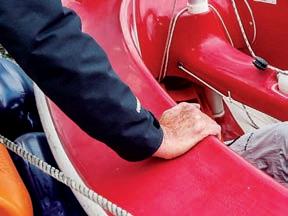
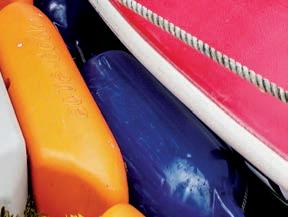




















































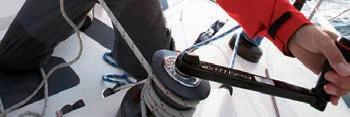





































































There are plans for Bluebird K7, Donald Campbell’s legendary hydroplane, to run on Coniston Water next year, subject to the approval of a speed exemption application.
Tracy Hodgson, Director of the Ruskin Museum, said: “We have applied to Lake District National Park Authority for the speed exemption to run K7 on Coniston Water, and the dates we have asked for are 10 – 17 May 2026. We do need to stress that until LDNPA authorise these dates nothing is confirmed.
“2026 will be the 70th anniversary of Donald Campbell’s first World Water Speed Record on Coniston Water. He achieved this record on 19 September 1956 with a speed of 225.63mph, and we have chosen 2026 to put K7 back on Coniston Water to commemorate his first Coniston Record. For those wondering why we have not asked for
September dates, K7 needs fairly calm water to be able to run. LDNPA have quite rightly said that we cannot run in summer holidays and Bank Holidays, as Coniston Water has a public right of navigation and during those summer and Bank Holidays it will be too busy.
“The reason we chose May was because hopefully this will give us the best weather window to run. There is no guarantee that K7 will be able to run every day of the planned dates as running K7 is very weather dependent, and safety will always be our number one priority, but we hope that by doing it over seven days we should get a good bit of weather.
“This is her first time on Coniston Water in 59 years, and we have new pilots and new crew who need to get used to her. Therefore there will also be land based events happening at the


Winter sailing is back, and this year Hayling Island Sailing Club is opening its doors to non-members for a series of racing weekends in the HISC Winter Open Series.
From 1 November through to 14 December, sailors are invited to take part in up to 14 races for just £70 per boat. Participation is open to all, and non-members are especially welcome.


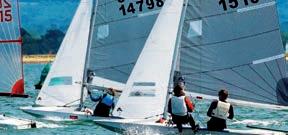
lakeside and in the village for everyone
“Everything is still in the early planning stages, so we do not have anything concrete to report as yet, but once we do there will be a dedicated website set up for the event.”


FB Imray Laurie Norie & Wilson GmbH (FB Imray) has begun operations in Vienna. The joint venture brings together the maritime expertise of Imray Laurie Norie & Wilson Ltd (Imray) and the cartographic competence of freytag & berndt (FB) in order to continue and further develop high-quality nautical charts, books and new digital products.
FB Imray has taken over Imray’s long-established product portfolio and will continue it
Whether you are chasing the podium or simply looking to keep your skills sharp through the oseason, the HISC Winter Open Series o ers the perfect blend of challenge, competition and harbour enjoyment. With crisp winter winds, stunning Solent backdrops and a welcoming racing community, each weekend o ers a true taste of what HISC is all about. Expect close competition, high-quality race management and the friendly post-race camaraderie the club is known for.

Whether you are a seasoned racer looking to stay sharp or a newcomer eager to experience club-level competition, this series o ers a brilliant way to stay active on the water through the colder months. www.hisc.co.uk

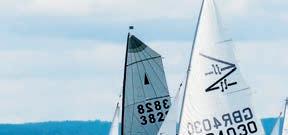

under the Imray brand name. In addition to producing highquality nautical charts and books, the company will also invest in new digital products, actively helping to shape the future of navigation and information for leisure sailors.
Sta from Imray in England will continue to support the joint venture, thereby contributing to the success of its ongoing activities. Dr Carl Rauch has been appointed Chief Executive O cer of FB Imray and Lucy
Wilson assumes the position of Editor-in-Chief.
Lucy Wilson said: “The start of operations marks the beginning of a new chapter. We are combining Imray’s long tradition and maritime know-how with the innovative strength of freytag & berndt – ensuring that sailors will continue to be able to rely on our trusted navigational solutions in the years ahead.”
UK customers are advised to place their orders through Bookharbour or Cordee.

Her Royal Highness The Princess Royal visited the Boat Building Academy in Lyme Regis to meet students past and present and learn more about its work preserving and promoting the heritage craft.
The Princess Royal enjoyed tours of the Academy’s boat building and furniture workshops, meeting students of the 40-week boat building course, and 12-week furniture courses, including a number who had been awarded bursaries to enable them to attend.
The Princess, who is Patron of The National
Transport Trust, also unveiled a Red Wheel plaque, awarded by the Trust in recognition of the academy’s important role in Britain’s transport and industrial heritage.
The Boat Building and Furniture Making Academy was founded in 1997 by naval commander Tim Gedge. Since then, it has trained more than 2500 people, including over 650 people in boat building.
The Princess also enjoyed a demonstration of steam bending by BBA Assistant Tutor Samuel Robinson and current boat building students Hannah Blake


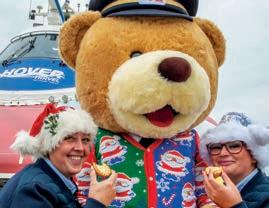

and Eleanor Snape. Steam bending involves making wood pliable by exposing it to steam and then bending it to a desired shape. It is used extensively in wooden boat building – most importantly in forming the ribs of boats. The Princess assisted in helping to hold the wood while it was secured for bending.
Tim Gedge said: “Her Royal Highness’s visit was hugely important to the BBA in endorsing our work in preserving and advancing traditional and modern boat building techniques, and as a charity in enabling and supporting boat builders and furniture makers to gain these ancient skills. The Princess was very well-informed and hugely engaged during her visit. We all feel immensely proud to have been able to showcase our work to her.”




As we swiftly approach the end of 2025, rest assured we already have lots of fantastic features planned for you next year, some of which are based around popular annual events but also some that are a one-o .
One of those is the plan to run Bluebird K7 on Coniston Water in May (see page 3). This is still in the planning stages, but it would be incredible to see, so fingers crossed it happens and All at Sea will be there to share the story with you.
Happening now, meanwhile, is an exhibition at the Scottish Maritime Museum in North Ayrshire exploring Sir Ernest Shackleton’s Antarctic expedition aboard the Endurance (see page 6). If you are planning a trip between now and 18 January, a visit to this area could be just the ticket! On the west coast of Scotland, within an hour of Glasgow, North Ayrshire has a stunning coastline. The award-winning Largs Yacht Haven can be found there too…
From Scotland to sunnier climes in the Canary Islands and this year’s ARC, which starts later this month (see page 12). Whether you are preparing for this transatlantic crossing or another one, this month’s hot topic by Neil Brinsdon has lots of advice for preparing your rig for an ocean crossing. Neil has advised many yacht owners - including ARC participants – over the years!
An alternative adventure is Oyster’s rallies, and they have unveiled new Oyster Explorers Club Rallies, which you can read about on page 12. We will be bringing you more about these in the new year too.
Back in the UK, and HRH The Princess Royal has again been showing her support for the

marine industry with visits to both the Boat Building Academy in Lyme Regis and Wetwheels Foundation in Torbay.


By Jane Hyde













Wetwheels, which enables disabled and disadvantaged people to get out on the water in a safe and rewarding way, is working to expand its fleet. The founder of Wetwheels, Geo Holt, was the inaugural chairman of RYA Sailability back in 1995, and over on page 16 we are looking at RYA’s Sailability in this month’s Youth Sailing series.
Staying with the RYA, this month we are celebrating 150 years of the organisation which now has more than 100,000 members and is the National Governing Body for a broad range of sailing and boating activities as well as a world-leading provider of training schemes and publications. Not bad when you consider it began with just over 120 members!



























Hayling Island Sailing Club, announced as a British Sailing Pathway Club, is opening its doors to members and non-members for a series of racing weekends in the HISC Winter Open Series. Starting this month, whether you are a seasoned racer or a newcomer, this series o ers a brilliant way to stay active on the water in the coming months.
If you prefer to watch the racing from the comfort of your sofa, we are approaching the conclusion of the SailGP 2025 season, and the British team is heading into the final event in Abu Dhabi later this month in a fantastic position as they sit at the top of the leaderboard. There are four teams which can reach the Grand Final, so this is an event not to be missed!
Enjoy the issue...







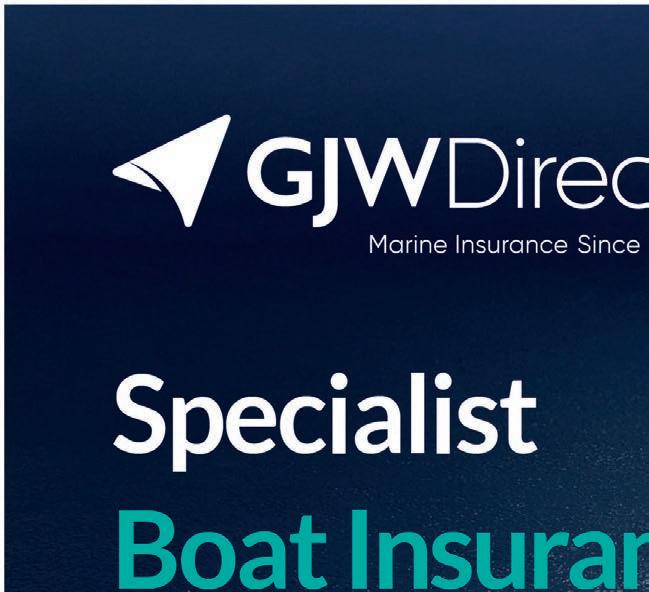



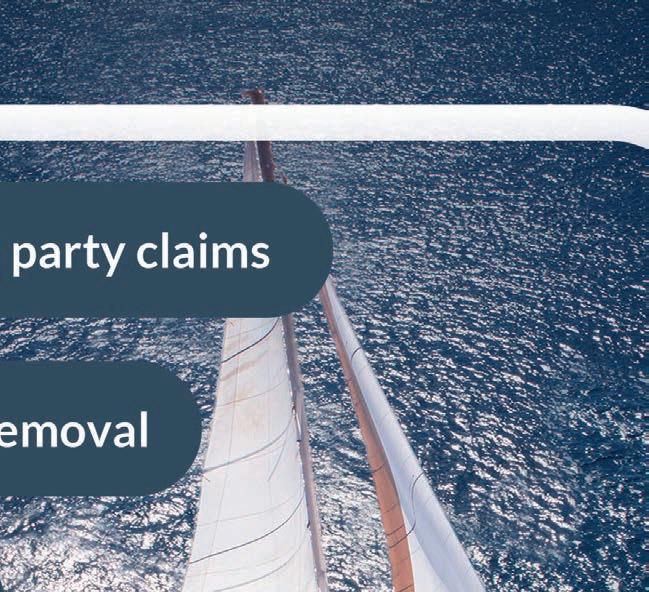
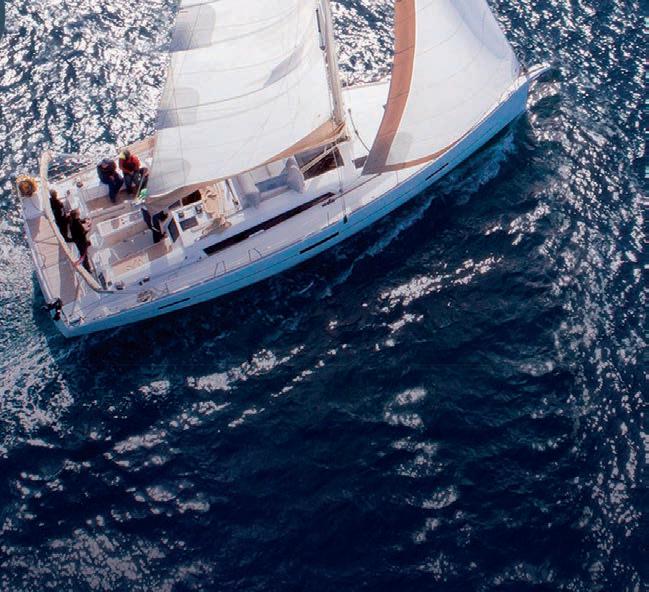



Wallsend Sea Cadets (TS Comus) received a £3,000 donation from Northumberland Freemasons to help replace ageing windows at their headquarters. Representing Northumberland Freemasons, Norman West said supporting organisations like the Sea Cadets is at the heart of their charitable mission: “Part of the funding we award twice a year goes to helping community groups, particularly those supporting young people. We are always delighted when our grants can make a real di erence to organisations like the Sea Cadets, who do such valuable work in developing the next generation.”
Congratulations to September’s competition winners. Richard Cooke, Shropshire, won a copy of Harbours & Their Masters. Susan Rogers, Cheshire, won a two night stay in a waterlodge at Yarmouth Harbour. This month’s competitions can be found on pages 10 and 26.
The Fastnet Race is meant to be a test of skill and endurance – a prestigious o shore race on one of the sport’s toughest courses. In 1979, however, it became a tragedy that reshaped safety at sea. From stricken competitors awaiting rescue, to the RNLI crews racing into danger, the fourth episode of the RYA 150 Podcast captures first-hand accounts of the e orts and the bravery shown on that night. Turn to page 18 to read about the 150th anniversary of the RYA. www.rya.org.uk/about-us/150years/150-podcast
Flushing Sailing Club has become one of the first clubs in the country to use a new technological, anchor-less racing mark known as a ‘Mark-Set-Bot’ during its summer racing season in the environmentally sensitive waters of Falmouth Harbour. The Mark-Set-Bot, named ‘Bot-icelli’ by club members, has an electric engine, controlled remotely using an iPad and located using GPS – removing the need for an anchor to keep it in place and preventing any impact on the seabed.
We only need to go back four years to a James Bond inspired cover featuring a beautiful Spirit 46 yacht, which the spy took to the water onboard for the film No Time To Die. We also reported on the discovery of the missing 1835 King’s Cup and, hard to believe now, we had the latest up-date on the rules for international travel in relation to Covid.


The America’s Cup has entered a new era of mutual governance. The Defender, Emirates Team New Zealand representing Royal New Zealand Yacht Squadron, and the Challenger of Record, Britain’s Athena Racing representing the Royal Yacht Squadron Ltd, have o cially agreed the terms for the formation of the America’s Cup Partnership having worked through the final points in establishing the Partnership in New York.
This historic agreement marks the first time in the event’s 174-year history that competing teams have united under a shared governance and commercial structure to more permanently manage the competitions, share economics and maximise engagement with America’s Cup fans around the world.
Athena Racing CEO and Team Principal Sir Ben Ainslie said: “The formation of ACP is a truly historic moment for the
An exhibition exploring Sir Ernest Shackleton’s legendary Antarctic expedition aboard the Endurance (1914 - 1917) is open at the Scottish Maritime Museum on Irvine Harbourside, North Ayrshire.
Fortitudo, by Italian artist Paola Folicaldi Suh, features scenes and portraits which vividly reimagine the extraordinary survival story of Shackleton and his crew who left Britain on the Imperial Trans-Antarctic Expedition or ‘Endurance Expedition’ in 1914. Although Shackleton failed to complete the first overland crossing of Antarctica via the South Pole, all 26 crew members survived despite two years stranded in the frozen wilderness.
Paola’s artworks draw on surviving black and white photographs taken by the expedition’s o cial photographer Frank Hurley and include oil paintings on sackcloth and mixed media panels combining oil and tempera on tapestry. Each piece is accompanied by quotes from Ernest Shackleton’s memoir South as well as recollections by Endurance captain Frank Worsley and Aeneas Mackintosh, captain of the support vessel Aurora.
The exhibition’s title, Fortitudo, is drawn, like the name Endurance, from the Shackleton family motto:

‘Fortitudine Vincimus’ – ‘through endurance we conquer’.
Eva Bukowska, Exhibitions and Events O cer at the Scottish Maritime Museum, said: “We are thrilled to welcome Paola Folicaldi Suh and host her remarkable exhibition Fortitudo. She dedicated over two years to researching the Endurance expedition. The result is a powerful and immersive series that breathes new life into this iconic chapter in maritime history.
“Her ability to convey the atmosphere, lighting and peril of the expedition is extraordinary. It is a wonderful opportunity to see one of history’s greatest tales of survival and leadership through the perspective of a contemporary artist.”
Fortitudo, which is included in the museum admission, runs until 18 January.
Formula 1 driver Esteban Ocon has announced a new partnership with Williams Marine Group, becoming an ambassador to promote Evene Tenders and Williams Jet Tenders.
As part of this partnership, Esteban will be working closely with the Williams Jet Tenders team to design and customise his own bespoke Williams SportJet 520, the brand’s most powerful model, equipped with a high-performance Rotax engine.
Esteban Ocon said: “I have been a big fan of the Williams Jet Tenders
America’s Cup and has taken 12 months and cross team collaboration to put in place. For the first time, teams are uniting not just as rivals on the water, but as shared stakeholders in its future.
“This collective approach enables us to realise the Cup’s global commercial potential while protecting its unique heritage. It marks the start of an exciting new era, not just for the teams, but for fans, partners and the sport of sailing.”
The America’s Cup Partnership, operational from 1 November, will be driven by a new governance board, with each team having a seat on the board, that will establish an independent management team focused on commercial growth, long-term investment into the event and the teams, continued technical development and innovation across enduring America’s Cup competitions which will be contested every two years.
ACP will serve as a centralised consortium function for the teams with the express purpose of planning, management, organisation and commercialisation of all aspects of the America’s Cup for ongoing event cycles. This will include the ownership, administration and exploitation of rights,
contracts, revenues, assets, personnel and activities necessary to the e ective conduct of the events in line with both the governance documents: The Deed of Gift and the Louis Vuitton 38th America’s Cup Protocol.
RYS Ltd Commodore Bertie Bicket said: “This agreement represents a pivotal moment not only for the America’s Cup but for the sport of sailing as a whole. The Royal Yacht Squadron has been part of the Cup’s history since its inception in 1851, and we are proud to play a leading role in shaping its future through this new era of collaboration and shared governance. The America’s Cup Partnership provides a solid foundation for sustainable growth, innovation and fairness among all competitors - values that lie at the heart of our sport.”
From 1 November, the establishment of the Partnership moves into a more practical phase of set up with a transfer of assets, establishment of key committees and appointment of key ACP personnel, all while operationally the planning on the ground in Naples continues with the development of the Bagnoli event site and overall event schedule including securing Preliminary Regatta venues for 2026 and 2027.

Poorly marked lobster pots and static fishing gear remain an unpredictable hazard faced by coastal sailors.
If a small craft is disabled by a fouled propeller and rudder, it poses a serious risk to navigation, safety and potentially the lives of those onboard. Other water users also run the risk of entanglement and for fishermen these incidents could result in significant losses when gear is damaged through entanglement.
To help address the issue, the RYA and the Cruising Association are uniting to call on sailors to report entanglements and sightings of poorly marked static gear. Reports can be submitted quickly and easily through the RYA’s Fishing Gear Reporting Form. Scotland took a significant step in 2020 by making it illegal to mark creels with anything other than a dedicated buoy. Elsewhere in the UK, voluntary guidance exists, but this has not been su cient to resolve the issue. The RYA and CA, along with other stakeholders, continue to seek a long-term solution.
“Safety at sea is everyone’s responsibility,” said Robin Baron, President of the Cruising Association. “The CA remains committed to ensuring safer waters and protecting those who navigate them. All who use our waters must play their part. The CA urges boaters to complete the RYA Reporting Form, so we can build a central database of incidents.”
Boaters are urged to report: ⚫ Entanglement incidents – whether you were directly involved, witnessed an incident or are reporting an incident that occurred earlier this year. ⚫ Sightings of unmarked, poorly marked or lost static fishing gear.
The form asks for location, date, time, weather conditions and type of fishing gear. It also allows for photo uploads. This data will be used to identify high-risk areas and to inform further discussions. rya.org.uk/water-safety/fishinggear-incident-reporting-form
brand having spent many holidays using their boats. It is therefore very special to be working on building and customising my own boat, the SportJet 520. It is their most powerful model and uses a Rotax engine which is familiar to me from my karting days.
"The quality and performance of Williams boats are second to none so the collaboration with this iconic British manufacturer is extremely exciting for me personally. I cannot wait to get out on the water!”
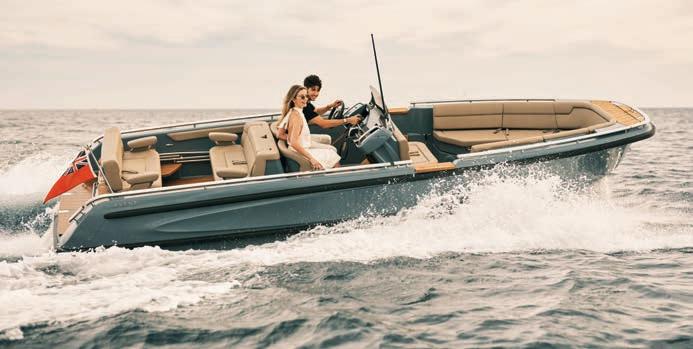

The Marine Conservation Society has updated its Good Fish Guide in line with the latest scientific advice. Rating seafood caught, farmed or sold in the UK, the Guide gives a tra c light rating for each fish or shellfish depending on how and where it was caught or farmed.
The update to the Good Fish Guide brings concerning news for North Sea herring, which has been downgraded from green-rated to an amber score, due to increased fishing pressure. This means there are now no green-rated options for herring which, like mackerel, is a small fish that plays a key role in the marine food web, being a vital food source for marine predators.
In contrast, seabass has seen an improvement in ratings across several regions including the North Sea, English Channel and Bay of Biscay, where ratings have changed from amber- to green-rated, due to good compliance with management and an improved outlook on population levels.
The Good Fish Guide reviews a portion of ratings on the Guide at each update. As ratings are based on where and how a species is caught or farmed, there are multiple ratings for every species. Two of the UK’s most eaten species, cod and haddock, have seen the ratings of some fisheries downgraded amongst growing concern for their sustainability.
The picture for cod has not looked good for a number of years, with no green-rated cod stocks in UK seas. The majority of cod is imported into the UK from Icelandic or Arctic stocks and whilst Icelandic Atlantic cod remains
green-rated, Atlantic cod caught in the Northeast Arctic moves from low amber to red-rated, reflecting a decline in population and increased fishing pressure.
Northeast Arctic Atlantic cod is one of the largest cod stocks in the world, with Russia and Norway being the main catchers. This ratings update, however, has found the population is decreasing and the fishery is linked to unsustainable bycatch of golden redfish, a species with no safe catch level, raising alarm further over ecosystem impacts.
Haddock from the Southern Celtic Seas and English Channel has also been downgraded, with haddock from the Southern Celtic Seas red-rated due to low population levels and overfishing. It also has high discard rates and significant bycatch of cod and whiting, which are both under zero catch advice in the area due to the depletion of stocks. Northeast Arctic haddock, previously considered more sustainable, has seen ratings drop due to rising fishing pressure and similar bycatch concerns.
The Marine Conservation Society encourages consumers, retailers and policymakers to use the Good Fish Guide to make informed choices that support healthy oceans. The next update to the Good Fish Guide will be in spring 2026.
Find the latest sustainable seafood advice for wild-caught and farmed seafood on the Good Fish Guide, downloadable to your phone from www.mcsuk.org/goodfishguide
The latest round of ratings updates for the Marine Conservation Society’s Good Fish Guide provides clear, practical advice for those looking to make more sustainable seafood choices.
The Guide uses a simple tra c light system to help consumers and businesses make sustainable seafood choices depending on where and how a species is caught or farmed. Covering seafood sold or produced in the UK, green are the ‘Best Choice’ most sustainable options, amber is an ‘OK choice’, but improvements are needed, and red indicates an unsustainable ‘Fish to Avoid’.
Chris Graham, Head of Ocean Regeneration and Sustainable Seafood at the Marine Conservation Society, said: “In the UK, most of the seafood we eat comes from just five species: cod, haddock, salmon, tuna and prawns. Relying so heavily on just a few species puts a lot of strain on wild populations and farms and can lead to unsustainable fishing and seafood farming practices.
“By choosing sustainable and lesser-known alternatives, we can help reduce that pressure and support more responsible seafood production. These small and simple swaps, made at the checkout and when eating out, can have a big impact on the health of our ocean.”
Top sustainable seafood swaps:
Swap cod for hake
Swap haddock for pollock
Swap salmon for farmed rainbow trout
Swap prawns for mussels
Swap tuna for anchovies or sardines


The Emirates Great Britain SailGP Team claimed its third victory of the season at the DP World Spain Sail Grand Prix in dramatic fashion.
In the final race, between the weekend's top three teams, the British team dived inside race leaders, New Zealand’s Black Foils, at the final mark to steal the win from the Kiwis.
It was a defiant race for Emirates GBR, as they su ered a boundary penalty in the start box which meant they had to start behind their opponents, New Zealand and Germany. It seemed to only fire the Brits on as they stayed focused on the task at hand, taking the lead on the third leg. The crew then su ered a touch down o the foils at the third gate which meant the Kiwis took back the lead. In leg five, the Brits and the Kiwis split the course with Emirates GBR at first having the
advantage, before New Zealand then made gains on the course. This was until the last mark, when Emirates GBR Driver Dylan Fletcher saw his now or never moment, and made the decision to dive inside Pete Burling’s crew and overtake them at the final mark and take the win.
Black Foils driver Peter Burling said: “On that final turn towards the finish, we thought we would be able to get to the zone o the left boundary, but we ended up on a much worse angle than expected going into the last mark. We were trying to get into the zone on the inside, but the Brits managed to just get an overlap on the outside.”
To secure their spot in the final race in Cadiz, Emirates GBR had placed 5th, 4th and 7th in the three Sunday fleet races, after Saturday’s 1st, 5th, 5th and 2nd.
Dylan said: “It has been an unbelievable weekend for the team. The penalty at the
start of the final race was not ideal but we kept pushing and it was a great battle with the Black Foils who had an amazing day. We are so happy to come out on top, ultimately it was all or nothing and when it came to that last turning mark we just gave it everything and it came o alright.”
The victory means Emirates GBR is the first team to win three Grand Prix this season and sees the team sitting top of the 2025 Season leaderboard heading into the last event, the Abu Dhabi Grand Final on 29-30 November. The top three teams from across the season will go into the winner-takes-all final in Abu Dhabi, where $2m is up for grabs.
Speaking about that final, Dylan said: “It certainly does not feel like the job is done at all regarding the Grand Final. We cannot ever rest on our laurels here in SailGP so we are going to push as hard as we always do to give ourselves
A new charitable organisation is being formed to preserve a unique piece of British maritime history: the 1951 RNLI lifeboat, Sarah Townsend Porritt (ON886).
The project has been operating as Saving Our Sarah CIC since May 2022 and is now in the final stages of converting into a full charity, to be named The Sarah Townsend Porritt Maritime Trust. Sarah, a 46ft 9in Watson-class lifeboat, is a decorated hero of the RNLI fleet. During a distinguished 27-year career stationed at Lytham St Annes in Lancashire, her volunteer crews launched 95 times, saved 43 lives and were awarded two RNLI Bronze Medals for Gallantry.
The new charity’s mission is to preserve Sarah and use her as a flagship for a new community and educational hub in Falmouth. A key focus for the project is building momentum towards Sarah’s 75th anniversary in 2026.
The charity’s long-term vision is built on three core pillars:

The Educational
To run a ‘Calm Waters’ programme supporting local mental health. The Restoration Workshop: The future home for Sarah’s preservation.
Hovertravel is spreading holiday cheer with a festive twist on its Behind-the-Scenes Tour when, on 22 December, the tour returns with a Festive Edition that promises mince pies, merry selfies and a sprinkle of seasonal magic.
Guests can enjoy a free mince pie in Solent Views, the viewing hub of the Hovercraft Centre of Excellence, o ering stunning views
over Ryde Hoverport and a fascinating glimpse into the history of hovercaft. Everyone on the 90-minute tour will also receive a gift-wrapped Hovertravel souvenir and meet Henri the Hoverbear, dressed in their most festive finery and ready for selfies.
There is also a Festive Behind the Scenes Tour (including return flight from Southsea) option;
the best chance of getting into that Grand Final race.”
Emirates GBR’s Hannah Mills added: “It is amazing to come away with the win here in Cadiz. It is a really good time to get the win and to now be on top of the leaderboard heading to Abu Dhabi is epic. It has been a really tough couple of days, and physically demanding for me so everyone is pretty tired but we are very happy.
"Looking ahead to Abu Dhabi, the pressure is definitely on but our team knows we can deliver under pressure.”


Poole Lifeboat Station will be the o cial charity partner for the International Paint Poole Regatta, scheduled for 22 – 25 May 2026.
The popular biennial regatta, which will additionally host the IRC European Championship, is poised to attract multiple racing classes and sailors from across the UK, Europe and beyond.
Poole Lifeboat Station has been an integral part of the RNLI since 1865, with its volunteers helping to save countless lives within Poole Harbour and along the Jurassic Coast. Located on the historic Poole Quay and operating from a floating boathouse, Poole Lifeboat Station operates two inshore lifeboats and is among the RNLI’s busiest coastal stations, averaging over 140 launches per year.
Poole Lifeboat Station volunteer Helm Jonathan Clark said: “We are
departure from Southsea at 13:30 and return from Ryde at 16:15.
Loretta Lale, Head of Marketing at Hovertravel, said: “We are excited to welcome visitors for a behind-the-scenes adventure with some seasonal sparkle. From mince pies with a view to selfies with Henri, it is all about sharing a little hovercraft magic this Christmas.” www.hovertravel.co.uk/experiences/festiveedition-behind-the-scenes-tour
honoured to be selected as the o cial charity partner for the 2026 International Paint Poole Regatta and are deeply grateful for the support. For all of us at the station it has been an exceptionally busy year.
"Whilst we work hard to engage with the public and continue to share vital safety messages, even the most experienced can find themselves in challenging situations at sea.
“As a charity that receives no government funding, we rely entirely on public donations to keep our lifeboats operational, ensure our crew are well-trained and equipped and remain ready to launch – ultimately saving lives at sea, being there when we are needed most. We can only do this with the support of our community – thank you.” pooleregatta.co.uk | rnli.org


KRIEGSMARINE NORTH SEA COMMAND 1939–42: GERMANY’S COASTAL NAVAL CAMPAIGN
By Lawrence Paterson
Illustrator Edouard A. Groult
£15.99
| Osprey Publishing
An authoritative, illustrated history of how Germany fought to dominate the North Sea in early World War II, and take the naval war to Britain’s coasts. Britain’s war economy relied not only on the Atlantic Convoys, but also on superiority in coastal waters. With diagrams, archive photos (some unpublished) and original artwork, this is the story of the Kriegsmarine’s struggle to cut Britain’s military and trade arteries.
ZOONIE SAILS HOMEONE COUPLE’S VOYAGE FROM THE SOUTH-WEST PACIFIC TO THE UK
By Barbara White
£12.99 (paperback) / £6.49 (e-book)
Self
Publishing House
In April 2017, Barbara and Robert White had successfully cruised to the other side of the globe when their yacht, Zoonie, moored north of Auckland, New Zealand, was struck by the remnants of Cyclone Debbie. The couple raced back to assess the damage and set to work, determined to accomplish their journey home. In the years that followed, as they sailed westwards from the South-West Pacific to the UK, the Whites faced further twists and turns. This book is an ode to a cherished boat, a love letter to slow travel and a tonic to the landlocked soul.
By Perrin Towler / Simon Jollands
The essential navigational guide for all of the UK and Ireland, as well as the North Atlantic coastline from Denmark to the Gironde, in a practical, handy format.
Streamlined to focus on tidal data (tide tables, tidal streams and tidal curves), the Small Craft Almanac is meticulously researched and fully updated for the 2026 edition, and includes a huge amount of information of value to small craft navigators.
As well as tidal data it incorporates secondary port di erences; 2,500+ waypoints; radio data; light recognition; weather information; principal lights; IALA buoyage; international codes and flags; sun/moon rise/set times and emergency information.
Presented in an easy-to-find, quickreference manner for onboard use, the PBO Small Craft Almanac represents excellent value for money for those who do not need the more comprehensive marina data, passage information and chartlets of the full Reeds Almanac.
Free supplements of up-todate navigation changes are available from January to June at: www.reedsnauticalalmanac.co.uk
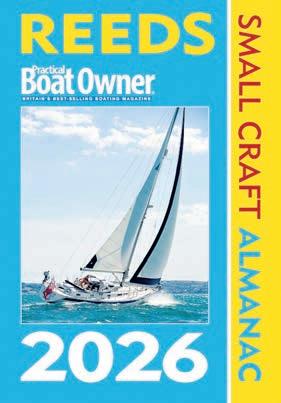
For a chance to win this book enter at www.allatsea.co.uk/competitions or by email to editor@allatsea.co.uk with the subject header ‘Small Craft Almanac’ Competition.
Q: As well as the UK and Ireland, this book covers the North Atlantic coastline from Denmark to where?
Closing date: 25/11/25. See competition T&Cs on page 4

The sea has always been a place of freedom, but for many disabled people, it has remained out of reach. Last month, HRH The Princess Royal joined Wetwheels Foundation in Torbay to celebrate a vision that is changing that –one where accessible boating is no longer the exception, but the norm.
The visit shone a spotlight on the work of Wetwheels, a national charity founded by disabled yachtsman Geo Holt MBE. With a fleet of eight specially adapted boats already in operation around the UK, they enable disabled and disadvantaged people – including those with profound and complex needs – to get out on the water in a safe, stimulating and rewarding way. Now, inspired by the growing demand for inclusive boating, Wetwheels
is embarking on the next stage of its journey: a drive to expand its fleet, with a goal of establishing 10 boats nationwide, and to bring the joy of life on the water to thousands more people every year.
Geo Holt said: “Boating is a privilege that everyone should be able to enjoy.
As our patron, HRH The Princess Royal’s visit highlights the life-changing impact of what we do – joy, empowerment, independence and inclusion. We are now asking people across the UK to join us and to help us take more people out on the water than ever before.”
Turn to page 16 to read about Sailability, and the ways those with disabilities, long-term health conditions or reduced mobility can take to the water.



A fresh consultation was launched last month for more people to have their say on proposals to make search and rescue response involving Personal Locator Beacons more e cient and e ective.
A package of updates has been drafted by the Maritime and Coastguard Agency which includes bringing PLBs under regulations that already apply to Emergency Position Indicating Radio Beacons.
The changes require people to register current and new PLBs with the MCA – online and free of charge – if they are carried on a UK flagged vessel, hovercraft or mechanically propelled watercraft, such as jet skis, wherever they may be.
The proposals do not apply to PLBs on unpowered craft such as paddleboards, kayaks and canoes. However, the MCA encourages the registration of PLBs used in these instances.
Registration means that when a PLB is activated, HM Coastguard can use the details supplied, such as emergency contacts, to gain crucial information to support rescue e orts and send the best resources to help. When PLBs and EPIRBs are registered, false alarms can be traced more
e ciently, helping to avoid rescue teams being sent unnecessarily into potentially dangerous conditions.
The regulatory package also reflects changes in technology and extends registration obligations to hovercraft and other types of watercraft.
Linda Goulding, UK Distress and Security Beacon Registry Manager, said: “Just 15 minutes spent registering a PLB online could make all the di erence to being found and recovered safely from a lifethreatening situation. These proposals would require action by anyone using a current or new PLB on an applicable vessel, so we are consulting again to make sure everyone gets a chance to have their say.” PLBs broadcast a location on the same 406MHz frequency as bigger EPIRBs but are designed to be worn on the body rather than on a vessel or liferaft and are always manually activated.
To find out more: https://shorturl.at/9lkJM (closes at 11:59pm on 7 November 2025) Email responses to radio@mcga.gov.uk by 9 November 2025.
To register a PLB or EPIRB, visit www.gov.uk/ register-406-beacons


The RYA Green Blue University Sailing Sustainability Challenge, sponsored by the Royal Thames Yacht Club, is back – inspiring students to lead the way in sustainable sailing and environmental responsibility across the UK.
Run by the RYA Green Blue, the Challenge celebrates university sailing clubs that champion sustainability and embed eco-friendly practices in their day-to-day activities — on and o the water.
Running until February, this year’s competition will culminate in an Awards Ceremony held for the first time at the British Universities Sailing Association Championships in April.
Participating clubs will focus on eight key sustainability categories, including improving water quality, protecting biodiversity, engaging young sailors, advocating for positive change and making events more environmentally sustainable.
“The Challenge is a fantastic opportunity for university sailing clubs to showcase the incredible work they do in sustainability, to make a real di erence to their local environment and to inspire the wider boating community,” said Kate Fortnam, RYA Sustainability Manager.
“We have seen some brilliant examples of how clubs can lower their impact without it being expensive or di cult. Every club can make simple, practical changes that create a lasting, positive e ect and we are excited to see what this year’s competitors will bring to the table.”
The RYA Green Blue University Sailing Challenge not only promotes environmental awareness but also empowers the next generation of sailors to take meaningful action in protecting the playground we all love.

Henri-Lloyd uses fabric innovations that are designed and manufactured using environmentally-friendly C0 Durable Water Repellent technology.
Kim Ramsay, of Henri-Lloyd, said: “We are proud to be one of the first manufacturers to move to chemical-free DWR coatings, a ground-breaking advancement in performance apparel that eliminates harmful fluorocarbons, known as PFCs, from the production process. Using C0 DWR has removed these persistent long-chain carbons from waterproof apparel, whilst still delivering the highest levels of protection and performance.”
With this move to chemical free coatings, the brand says there are some simple steps users can take to ensure the longevity of waterproof shell jackets and salopettes, especially now many boaters are putting away their waterproofs until the spring.
⚫ Always rinse sailing and boating clothing with fresh water after use, which helps remove salt and grime build up.
⚫ Put gear into a washing machine on a cold, gentle cycle, using non-bio detergent and avoid using bleach, biological soaps or conditioner.
⚫ Make sure all zips and fasteners are closed before machine washing, and leave the garment the right side out, which protects the seams.
⚫ For garments which have had a high amount of wear, users might notice that water stops beading on the surface. If this happens then it is time to re-apply a PFC-free DWR coating. Always follow the product instructions for application.
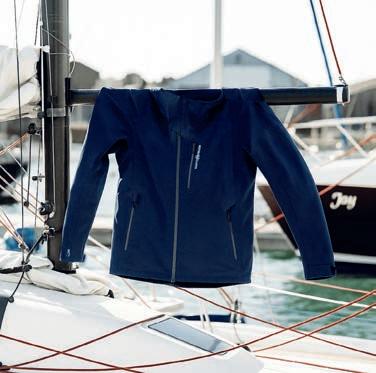
⚫ Dry the garment gently either naturally or tumble dry on a low heat for 15-20 minutes – this helps reactivate the DWR. If needed, you can iron on a low heat, without steam, using a towel as a protective barrier.
⚫ Once washed and dried, store your waterproofs by hanging them in a cold, well-ventilated storage space until it is time

As the Atlantic Rally for Cruisers (ARC) prepares to set sail from Las Palmas de Gran Canaria on 23 November, Peters & May marks 20 years as the o cial logistics partner of the World Cruising Club.
As both organisations celebrate significant anniversaries – World Cruising Club marking its 40th year and Peters & May its 20-year partnership – this year’s ARC promises to be a landmark event, combining tradition, community and world-class logistical support.
Since 2005, Peters & May has played a pivotal role in the logistical success of World Cruising Club events, including the ARC and ARC Plus, ensuring the safe and e cient shipment of thousands of yachts to and from more than 75 countries. Beyond yacht transport, the
company also manages sails, spare parts and other essential equipment, navigating customs regulations to support rally participants worldwide.
The ARC 2025 will see over 140 yachts depart Las Palmas, covering approximately 2,700nm to Rodney Bay Marina, Saint Lucia. Participants will experience the thrill of crossing the Atlantic with the support of a rally renowned for its community spirit, safety measures and comprehensive logistical support.
Turn to page 22 to read this month’s Hot Topic - preparing your rig for an ocean crossing by Neil Brinsdon, Managing Director at Advanced Rigging and Hydraulics, who has advised many yacht owners - including ARC participants.
For those who dream of far horizons and the camaraderie of fellow adventurers, but do not have the time to commit to a full circumnavigation, Oyster Yachts has unveiled the Oyster Explorers Club Rallies.
Part of the newly launched Oyster Explorers Club, this series of fullysupported sailing voyages invites sailors to experience the thrill of bluewater adventure in a way that fits their lifestyle. Whether participants are drawn to Arctic glaciers, sun-drenched Pacific atolls or the raw drama of Cape Horn, the Oyster Explorers Club Rallies o er a taste of the Oyster life without the 16-month commitment of a global circumnavigation.

Designed for those who seek more than just a sailing holiday, each rally is a curated adventure, blending o shore passages with immersive cultural encounters, breathtaking anchorages and curated social experiences in extraordinary locations around the world, many

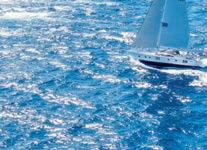
First Class Sailing has released its 2026 Adventures programme, which will see crews with various levels of experiences tick o bucket list sailing opportunities aboard a tried and tested Challenger 72 steel sloop provided by their partners at the Tall Ships Youth Trust.
You could be embarking on one of two 11-day Norway sailing trips; each combines five to six days cruising around the spectacular ords between Stavanger and Bergen with an extended passage (four to five days) between Portsmouth and Norway at the beginning or end of the trip. There is much to see on this trip, from the city of Bergen to the caves at Radiohalo.
For those who are looking for sun, sand and sailing then look no further than a Caribbean cruise. Crew will enjoy plenty of time handling the yacht, however
there will be more than enough time to explore island life and sip a cocktail or two on the beach.
Alternatively, high on many a sailor’s wish list is to complete all or part of an Atlantic circuit.
Jake Carter, Vice Principal at First Class Sailing, said: “We are very excited to make a return to o ering bucket list sailing trips which enhance our local o erings at our Southampton base. Having sailed all of these routes previously, apart from Norway, I can personally vouch for the calibre of the sailing to be expected.
"This is probably our largest programme of adventures to date and we cannot wait to see sailors fulfil their ambitions and experience these incredible sailing routes and destinations.”

The Beaulieu River hosted a coordinated oil spill exercise in collaboration with marine and conservation agencies.
The drill tested the marina’s readiness and response capabilities during a simulated emergency response in Beaulieu village. The exercise focused on protecting both the local community and surrounding wildlife habitats, ensuring teams are prepared to act swiftly and e ectively in the event of a real oil spill.
Representatives from Hampshire & Isle of Wight Fire & Rescue Service, the Marine Police Unit, Environment Agency, Natural England, Hampshire County Council and Perenco joined Harbour Master Wendy Stowe and the Beaulieu River team for the drill, which was facilitated by the Adler & Allan marine response service.
Using a scenario in which an oil tanker rolled over while passing through Beaulieu village, the exercise was conducted in real-time to evaluate the readiness of the river and Beaulieu
accessible only by boat. From the rugged beauty of Norway’s ords to the remote islands of Polynesia, every journey is underpinned by Oyster’s signature ethos of quality, community and discovery.
Owners sail in the company of a likeminded fleet, supported by Oyster’s expert team. Oyster has even brought on a new team member dedicated solely to booking o shore excursions –everything from safaris to guided hikes to cooking lessons with locals.
Routes include:
Arctic Rally – Journey through Norway’s ords and sail north to the Svalbard archipelago on a four-month Arctic sailing adventure.

Viking Rally – Explore the untouched landscapes of the North Atlantic.
Pacific Rally – Sail through the Pacific’s most captivating destinations.
Cape Horn Rally – Embark on a bucket-list 12-month circumnavigation around the iconic southern capes.





Estate teams. As the simulated incident unfolded, team members promptly engaged with emergency services and environmental specialists to manage the ever-evolving situation.
The river team deployed marine booms, e ectively containing the spill and preventing contamination of nearby sensitive wildlife habitats. Meanwhile, the Beaulieu Fire & Rescue Service practiced using its equipment and techniques.
From the incident command centre at Beaulieu Fire Station, the response team underwent rigorous assessment focused on the decisions made, actions taken and the speed of reactions. The operation was supported by expert guidance ensuring a comprehensive and e ective emergency response exercise.
Harbour Master Wendy Stowe said: “Conducting the exercise in Beaulieu village, where it was visible to members of the public, added an important element of realism and community engagement.
"The team worked very well, and I feel very reassured that if a real incident occurred, we have the right tools and expertise to respond e ectively. Additionally, and most importantly, we were able to demonstrate that our current oil spill plan is robust and reliable.”





KIT FOR CHRISTMAS
Gtechniq Marine Aftercare Kit
The perfect present for the boating enthusiast in your life. Packed with premium cleaners and protectants in a smart kit bag, this will keep any vessel, from a jet ski to a motor yacht, sparkling all year round. £95


Gtechniq Citrus
All Purpose Cleaner
A perfect practical stocking filler. This coating safe cleaner cuts through dirt and grime with ease, keeping every surface fresh and spotless. Available in 500ml or 5L sizes.
£11.20 - £66.50 www.gtechniq.co.uk
Top Tactics is a set of model Optimist dinghies designed to help sailors of all ages and abilities improve their racing tactics through hands-on, visual learning. The set includes four Optimist dinghies, a committee boat, racing buoys, pin marks, flags and course cards, with the option to expand fleets by purchasing additional boats. The models are made from robust plastic, designed for repeated use in both coaching sessions and at home.
£59.95 / thecrazycow.uk
TIP
Many retailers can send gifts directly to the recipient, saving you time and hassle.





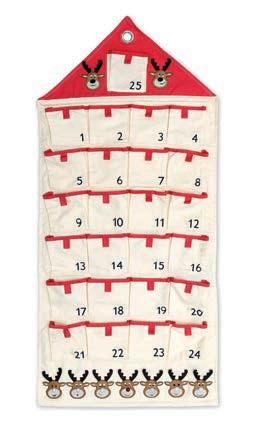
PAGE 26

Sevylor Dry Bag 10L
This Dry Bag is the ultimate companion for watersports. Constructed from robust 420D nylon, with a TPU coating and welded seams, it provides exceptional water resistance and will stand up to the demands of life outdoors.
£19.99
25QT Pro Cooler
Ensign Series Personalised Cushion
Give a boat owner’s vessel a cozy upgrade with a stunning nautical cushion, personalised with their boat’s name - a perfect gift to snuggle up with onboard! Whether they love classic Breton stripes or a bold Ensign-inspired design, Evocean’s collection of nautical cushions will add a fresh and stylish vibe to any maritime setting. From £34
Race Series Personalised Towel

Looking for a unique and practical gift this festive season? Evocean’s handmade, quick-drying towels are perfect for anyone who loves life on the water. Crafted from a premium microfibre and cotton blend, they fold up compactly - saving valuable boat space - and dry in a flash. Personalise them for an extra special touch that will make your gift stand out under the tree! From £44 evocean.co.uk
COLEMAN KAYAK PAGE 26

£129.99
www.colemanuk.co.uk






Coleman’s 25QT Pro Cooler can keep ice frozen for up to 3.5 days, perfect for staying cool during adventures on the water. This high-performance cooler is extremely tough, so it can withstand the rigours of life outdoors and can even be used as a seat.



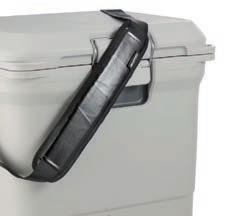


Not only do virtual gifts o er great present ideas, but they are environmentally friendly and, if you need a last minute idea, they o er
Space at a premium and great performance required for that special person in your life? Choose men-ü ultra concentrates with a high percentage of modern, active ingredients, plus a Premier shaving brush with custom made bristles, chrome stand and durable toiletry bag. The Premier Choice value is usually £144 although at Christmas it is £119.95, but you can buy it for £99.95 with this exclusive All at Sea offer of 20 per cent off all men-ü products using the AAS20 code. men-u.com
Solent based dinghy sailor David Henshall is a well known writer and speaker on topics covering the rich heritage of all aspects of leisure boating.

This month’s Diary page is indeed a monumental tale, as it will also complete a run of pages that started with the quarrying of Portland stone, before taking on a strong Trafalgar theme that reflects the incredible exploits of the British fleet on the waters of southern Spain 220 years ago.

The hero of Trafalgar was, of course, Horatio, Lord Nelson, who sadly fell onboard HMS Victory just as the battle was being won. Nelson had decreed in his will that should he fall in battle, rather than be buried at sea as was naval practice, that his body be returned to the country he had given his life for.
His remains were put into a barrel of brandy, taken back to London and his tomb is now in Westminster Abbey, but far more people know him through the impressive column in Trafalgar Square, topped by a statue of Nelson facing south, towards the Admiralty building but also further south towards southern Spain (this is just the biggest and bestknown monument to Nelson, as there are a number of others, not just in the UK, but around the world).
In some way even more impressive is the monument to the great ‘unsung hero’ of Trafalgar, Admiral Collingwood who we featured recently, standing high on the hill that forms the north bank of the entrance to the River Tyne, where his statue looks out over the waters of the North Sea. Collingwood’s role at Trafalgar is often overlooked, whilst the part played by what could be classed almost as a ‘supporting role’ will always find a way into the stories of the battle.
With the increasing complexity of the ships and the growing sophistication of strategic battle plans, an Admiral would be in charge of the fleet, but the boat on which he flew his pennant would be controlled by a Captain, a clear division of tasks that left the overall leader free to focus on the bigger picture. Nelson
may have been aboard the Victory, but the ship itself was in the hands of a career Naval O cer, Thomas Masterman Hardy.
Hardy was a true son of Dorset and had grown up just a few miles inland from the sea and the growing naval establishment at Portland.
After attending Grammar School at Crewkerne, Hardy would serve on a number of ships, firstly as a Midshipman where he saw service in the Mediterranean. Later on, as First Lieutenant on HMS Minerve, his career path would cross with that of Nelson and the two men would build a lasting friendship.
of the
from
In one daring action against the Spanish, Hardy was captured, thankfully to be released shortly after in an exchange for a Spanish Captain. This and other brave actions would bring him promotion to the command of his own ship. Both Nelson’s and Hardy’s careers were firmly in the ascent and by 1803 they were serving together onboard HMS Victory.
Two years later came one of the defining moments in our naval history, when Nelson sailed the British fleet headlong into the larger combined French and Spanish ships, a move that saw the

Victory pounded by the enemy guns yet somehow Hardy would remain unscathed, apart from a flying splinter that ripped the buckle from his shoe.
The two men were together when Nelson was shot by a sniper, at which point Hardy had his men carry the Admiral below before returning to the needs of the still fighting Victory. With the battle all but won Hardy was with Nelson in his final moments, telling his Admiral that “14 or 15 ships had been seen to strike their colours”.
Then came that very special moment when Nelson asked Hardy to kiss him, a sign of love and respect between two men who had become special friends.
A little while later Hardy kissed Nelson a second time, on his forehead, to which Nelson replied “God bless you Hardy” before dying a short while later.
After Trafalgar Hardy would gain further promotions and take part in a number of actions, yet despite the great risks involved would survive unscathed to finally come ashore as First Naval Lord, where he was instrumental in promoting the use of steam driven ships into the Navy. His final posting was as Governor of Woolwich Hospital, where he would die and be buried in the Hospital Cemetery.
After his death Hardy’s daughters were instrumental in organising a public appeal for funds to create a fitting memorial to their father, with the stipulation that it would be close to the sea and significant enough that it could be used as a landmark for shipping.
The chosen spot was high up on the summit of the Black Down, just to the north-west of Portland. The memorial would be built of Portland Stone, but not from Portland itself, but from the
Rocket Quarry, where a mainland spur of the famous stone could be mined. Moreover, the quarry was part of the village of Portesham, where Hardy created his family home.
The planned monument would be 22m high and whilst octagonal, was to be shaped like a naval telescope with a huge amount of thought going into the final planning. The result was that the eight sides were all true to the eight cardinal points on a compass, whilst the entrance door faces to the north. The family’s wishes would now come true, as since 1846 the Hardy Monument has featured on charts showing Lyme Bay and Portland.
Once inside the entrance, a narrow spiral stone staircase comprising 120 steps leads upwards before branching out onto a viewing platform that o ers one of the most impressive views anywhere along the UK’s South Coast.
The good news is that today the Hardy Monument is part of the National Trust estate and is open to the public on weekends during the summer months. The climb up the stairwell is not too demanding, but the reward on reaching the top and the viewing area more than makes up for the e ort. Looking to the east, St. Catherine’s Point on the southern tip of the Isle of Wight is clearly visible, whilst looking to the west there are panoramic views over Lyme Bay that extend as far west as Start Point. The views when looking inland are no less impressive, with the Mendip Hills 60km away being visible.
Of all the post Trafalgar monuments, the one to Thomas Masterman Hardy is the one that gives sailors of today the greatest access and, on a clear day, the greatest of rewards: for anyone visiting the marinas at Weymouth or Portland, this has to be on the list of things to do.
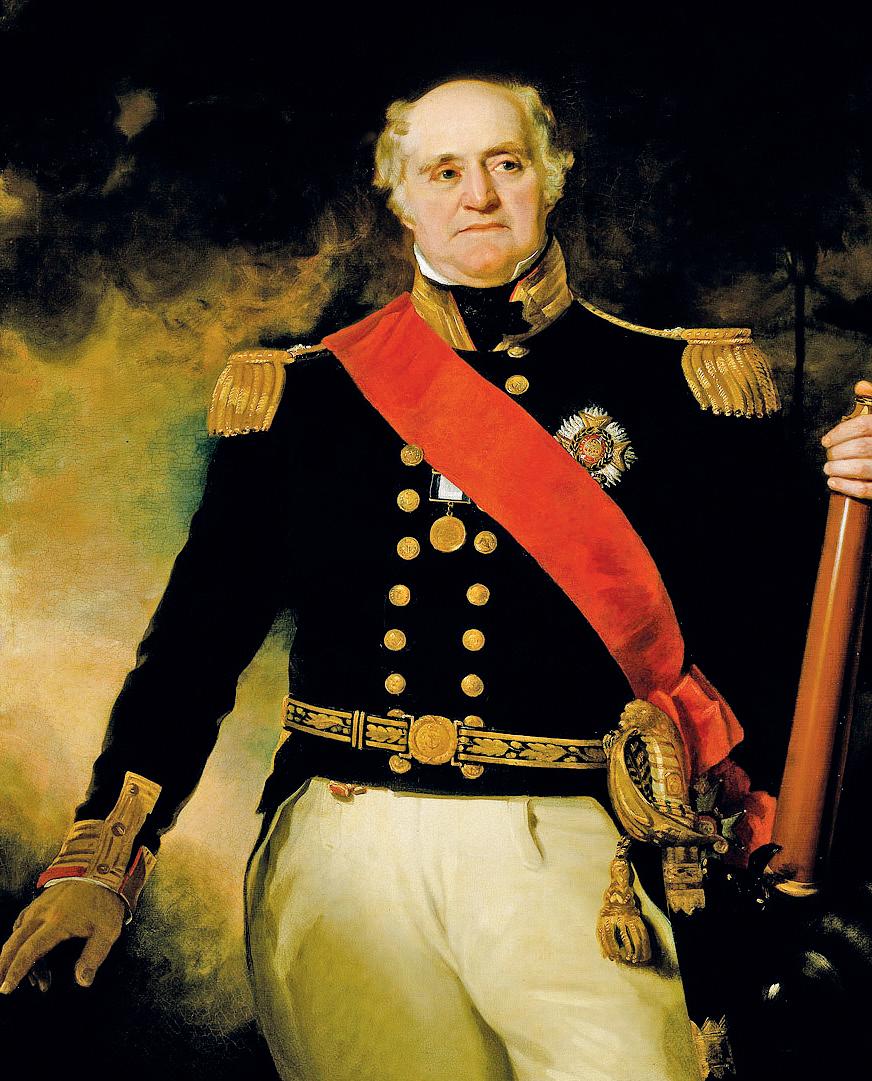

Amelie Ballantyne is a talented 15-year-old dinghy sailor from Devon, and this month she is discussing why winter is not for hibernating, it is for sailing.
After the fun of summer sailing - with its regattas, sun cream and long evenings splashing about on the river – it is easy to feel a little deflated as winter approaches and evenings get darker. But do not pack the boat away just yet. Sailing does not have to stop when the clocks change; in fact, winter can bring fresh opportunities for every keen sailor. The variety of conditions we train in here in Britain is one of the reasons our sailing teams are so good. You just need to do one thing first: invest in a good pair of warm gloves.
Across the country, clubs and classes run winter training programmes, making it the perfect time to sharpen your technique and build new skills. There is something on o er for all ages and abilities, though be warned - these sessions are popular and are often booked up fast.
Some programmes require you to attend selection days, while others are open to everyone, so it is worth doing a bit of research early to find out what best suits your personal goals and how far you are willing to travel.
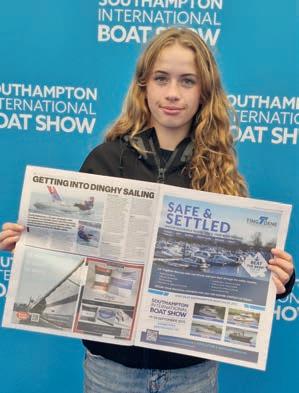

Unlike the busy regatta season, winter gives you a chance to step back from the pressure of race results and really reflect on your sailing. That is one of the reasons I love it - it feels more relaxed and sociable. This winter, I will be training with the ILCAs at WPNSA each month, and I am excited to focus on my sailing style, pick up new skills and enjoy time on the water with my friends. There is something about winter sailing that really brings sailors together and strengthens that team bond.
In fact, winter might just be my favourite time of year to sail. The powerful winds and rolling waves make each session exciting, and there is nothing quite like surfing the boat down a rolling wave. At the end of a tough training day, the sense of achievement is huge - and the laughter, smiles and stories shared over steaming bowls of hot pasta make it even better.
And do not be put o by the forecasts - if anything, winter weather is more predictable than summer. It is usually
cold, wet and windy, so you know what you are in for. I actually enjoy the ritual of scraping ice o the boat and doing star jumps to warm up. The key is being organised with the right kit to keep warm as the cold will ruin your experience of winter sailing if you are not prepared for it.
I never sail without my thermal Rooster socks, base layers under a winter wetsuit and a warm hat. Good gloves are essential - and do not forget money for a hot chocolate after you come ashore. With the right layers, you will stay comfortable and make the most of every winter session.
If you would like to find out more about winter training, head over to the RYA website or your class association’s site. Your local club is also a great place to check, as many run their own training programmes through the colder months. Most importantly, remember to enjoy yourself and stay warmbecause all that hard work on the water will pay o when the sun finally returns in the spring.
We will catch up with Amelie soon.





















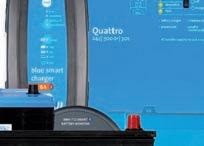




























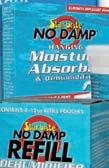








































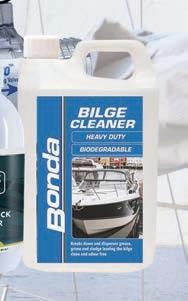




















The Rona Sailing Project is a volunteer-based sail training organisation, working primarily with young people between 14 and 25
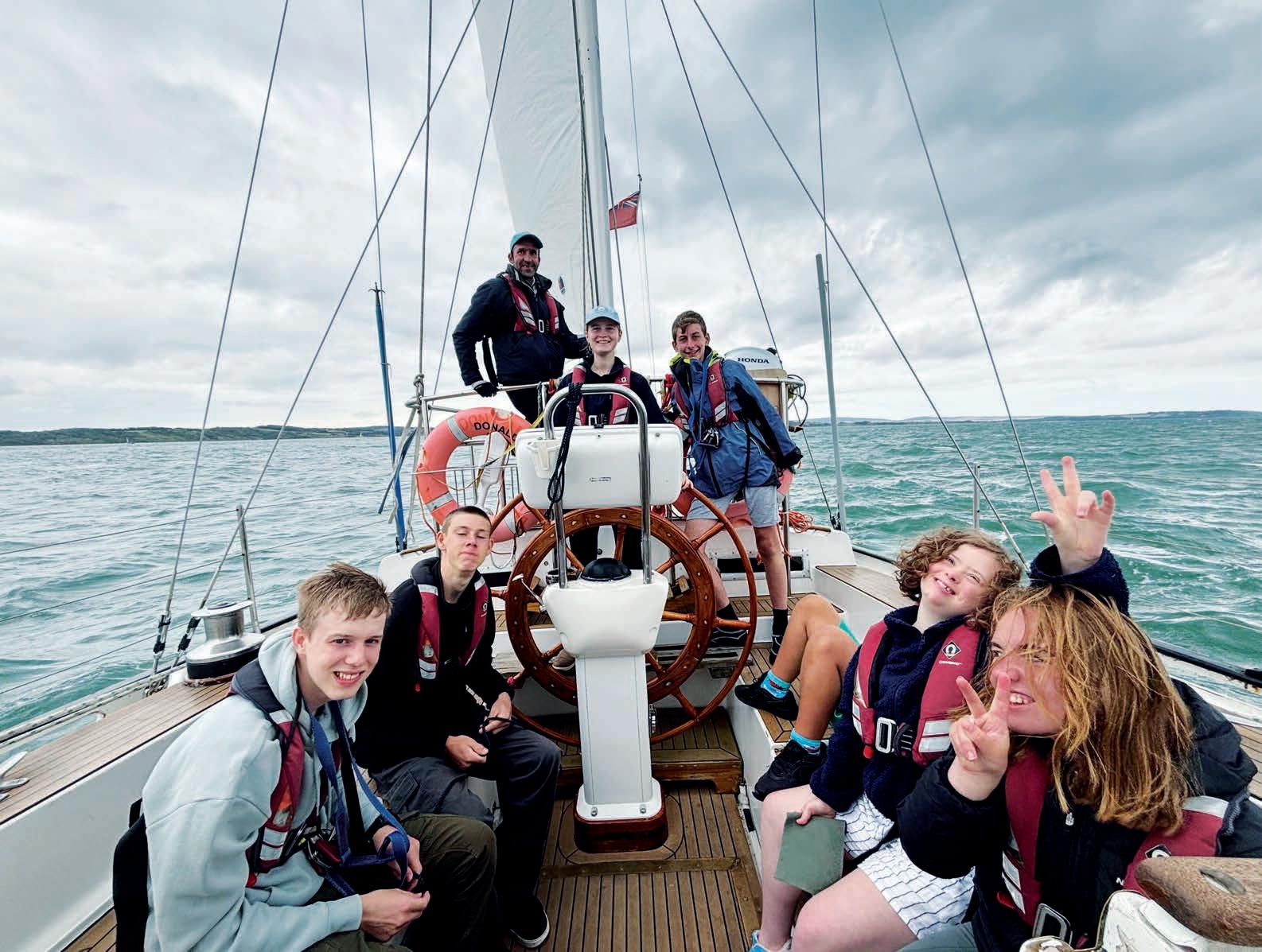
RYA’s Sailability can open up a world of possibilities to sailors - of all ages - with disabilities, long-term health conditions or reduced mobility.
Sailability focuses on removing barriers, building confidence and fostering a sense of freedom and empowerment for those who wish to enjoy time on the water. The programme, which is accessible through a liated clubs and training centres, o ers adapted boats, specialised equipment and trained volunteers to provide a fun, safe and inclusive sailing experience.
The possibilities for disabled people are endless, from exploring lakes and reservoirs, to adventures on the sea or
enjoying the peace and tranquillity of inland waterways. Finding the best place to get on the water is important so you can learn new skills, be more active, connect with others and improve your wellbeing.
The good news is there are more than 200 Sailability centres around the country, so it is a matter of finding the location that best fits your values, needs and budget. When choosing a venue make sure it fits your criteria: do the facilities meet your needs? Does it o er the type of boating you are interested in? Do they o er the training you want? What safety arrangements are in place? What support will you get? Do you have to be a club member?
These are just some of the typical questions, which will vary depending on your own circumstances. The RYA’s search tool will help you find the right venue for you.
Participants can enjoy simple taster sessions or take courses, all adapted to individual needs. Here it can be important to di erentiate between a training centre and a sailing club.
An RYA Recognised Training Centre can teach RYA courses (practical and theory) and has to meet rigorous quality and safety standards. These include safety management, instruction and learning, and maintaining equipment. Centres can provide a range of activities for everyone, from beginners to experienced sailors, and are inspected.
RYA Training Centre recognition is equivalent to an Adventure Activity Licence (AALA). A number of training centres are also Duke of Edinburgh Award Centres.
On the other hand, RYA a liated clubs and organisations are a club or group that

There are funding and sponsorship opportunities available, which can assist with coaching, equipment, volunteer training and more. There are a number of trusts, foundations and other organisations which can be a good source of grants. Find out more at www.rya.org. uk/about-us/our-programmes/ sailability/funding.
Alternatively, sponsorship is most commonly financial but can also be in the form of in-kind sponsors (goods or services).
Think about what you could o er a company or organisation and what they might be looking for in return. Trying approaching those companies or organisations with your ideas.
provides boating activities for its members and can access best practice advice and support from the RYA. They can provide a range of activities, from beginners to experienced sailors. A liated clubs and organisations are responsible for setting their own standards and procedures on the water.
RYA Sailability are RYA A liated Clubs or RYA Training Centres providing activities for disabled people and others with longterm conditions. Sailability venues that are a liated to the RYA are not inspected; learning and sharing of best practice is encouraged across the Sailability community. Sailability venues have a commitment to:
● The principles of Safe, Fun and Open activities on the water
● Developing your skills, knowledge and confidence
● Identifying the right activity for you and supporting you to achieve your potential
● Removing barriers to your participation
● Learning and sharing knowledge about what works well and what does not
When you first start out it is important that you know what to expect and what is and is not provided, as well as anything the volunteers need to know to support you and help you get the most out of it. You do not have to actually go on the water until you feel you are ready to do so, and while the weather conditions will also dictate whether you can sail, it will always be your choice. Learn at your pace, taking things one step at a time.
From small boat sailing to radio operation there are many RYA courses and qualifications available. Course adjustments can be made for disabled people to complete RYA courses and gain qualifications.
1. Course Completion - Adjustments can be made to how learning is assessed, and certificates endorsed if you need assistance to complete certain elements of the course.
2. RYA Instructor Awards - Adjustments can be made to how competence is assessed, but not what is assessed. If you need assistance to perform some elements of the instructor role, a support statement agreed between you, the RYA and any venue where you work can be put in place.
3. Certificates of Competence and commercially-endorsed certificatesCertain RYA qualifications provide a reliable indication of knowledge, skills and understanding of the holder to Government, industry and the public. They are issued by the RYA but recognised, or in some cases delegated, by other authorities such as the Marine Coastguard Agency.

The Ellen MacArthur Cancer Trust takes young people aged 8-24 on sailing and outdoor adventures to inspire them to believe in a brighter future living through and beyond cancer
Some are a great way to get into racing –with a Paralympic pedigree – but others are more suitable for cruising around. Adaptations are possible to improve both access to the boat and control once onboard. They can be crewed by disabled and non-disabled sailors alike.
Examples: 2.4mR, Sonar, Elliot 6, SB20, SKUD, RS Venture, Hawk 20 Yachts and Tall Ships: Bigger and really stable because of a keel, yachts and tall ships require team work to get where you want to go whether it is a day trip around the coast, or an ocean crossing. A very few have been adapted so you can stay in your wheelchair, and others will have aids to make it easier to get around.
Examples: Ellen MacArthur Cancer Trust, Tall Ships Youth Trust, Oceans Youth Trust (South); Rona Sailing Project Powerboats: An alternative to sailing, accessible powerboats mean you can stay in your wheelchair once in the boat. Get aboard straight from a pontoon or slipway with side access or a drop bow.
Examples: Wheelyboats, Wetwheels
Across the Sailability network there is everything from adventure on the high seas, to peace and tranquillity on the canals. There are also groups that focus on the thrill of competition while others prefer to relax.
“Disabled people are able to enjoy time on the water in many, varied types of boat, not just those that have been adapted. From tall ships to narrowboats, to dinghies and keelboats, and from windsurfers to powerboats - you name it, disabled people are out there sailing it!”
No adjustment to what is assessed and how it is assessed can be made without further consultation or approval.
A range of specially designed boats are available to accommodate people with di erent physical abilities. From transfer boards, to stacking steps and hoists, there are a variety of solutions that enable almost anyone to get in and out of a boat. With advancing technology, we are seeing more and more innovative solutions to enable those with even the most restricted mobility gain independence and enjoy everything Sailability has to o er.
Once onboard, seats can be adapted to ensure the sailor is comfortable and able to actively participate. From low tech beanbags to foam padding and specially fitted seats – there are numerous options and possible adaptations.
It is about finding ways to get on and o the boat, getting into the right position
within the boat and having the support to control the sails and steer.
Some of the boat options for all ages commonly available at Sailability venues: Small Boat: You will find a variety of small and responsive boats, featuring a heavy centreboard or lifting keel that provides extra stability for people who may lack the mobility to move around the boat easily. The often simple set up makes it easy for beginners to learn to sail, but they are also great for racing and many offer high performance for even the most competitive of sailors. Single-handed or double-handed, they can be sailed by both disabled and nondisabled sailors.
Examples: Hansa 2.3 and 303, Liberty Multihull: Twin or three hulled small boats, with forward-facing seats and adapted steering. They are stable, fun to sail, o er

excellent performance and can be used in regular club racing.
Examples: Challenger, Windrider, Weta Day Boats: Day boats o er stability and plenty of space. Suitable for both cruising and racing, small adaptations to meet individual needs are commonly seen. They are fun and sociable to sail, with room for multiple crew members – perfect for going further afield.
Examples: Traditional longboats, Luggers Keelboats: With even greater stability provided by a keel, these boats can be sailed single-handed or by several crew.
Volunteers are the heartbeat of Sailability. All kinds of people give their time to support sailors in getting on the water - there is a role for everyone, on or o the water. You might be a sailor who wants to give something back, or a sailing club member who wants to do something with the skills you have.
1. Instructing and coaching - Teaching people to develop skills in di erent boats, or guiding sailors to become successful competitors.
2. Helming and crewing - Some people always need someone in the boat with them - either as helm or crew. Get to know people, enjoy sailing with them and develop your own skills at the same time.
3. Race management - There are some keen competitors across the Sailability network so there is often a role for race o cers, mark layers, judges and umpires.
4. Safety boat crew - Use your RYA Powerboat qualifications and be part of the safety fleet.
If you choose, you could decide to race, which you will be able to do locally at many Sailability clubs. The Class Associations organise a series of open events and national championships each year too, or join an open series such as the Sailjuice Winter Series.
Beyond that, at the European and World Championships it is possible to meet and compete with para sailors from all over the world. Or get involved with the likes of the Special Olympics, GBR Blind Sailing and Deaf Sailing UK – all of whom provide routes to local, national events and international events.
In addition, every year there are disabled crews taking part in iconic events such as the Round The Island Race and the Small Ships Races.
Being on the water is great fun. It builds confidence, independence and opens up a world of possibilities.
Find a Sailability centre near you: www.rya.org.uk/about-us/ourprogrammes/sailability
NEXT MONTH: Pt4 Youth Racing
1. Point of contact - Provide a warm welcome and contact point for enquiries, develop partnerships with local community organisations that can reach disabled people who may want to come sailing.
2. Preparing boats and sailorsThere is kit to be handed out, boats to be rigged and launched and sailors who need support to get in and out of boats.
3. Maintenance - Boats need maintaining so they are safe and ready to use, and buildings and grounds need looking after.
4. Running a small organisationMembership schemes need to be run, monies fundraised and accounted for, legislation and regulations complied with, and other volunteers supported and developed.
5. Digital, communications and marketing - Develop a club or centre’s website as a great shop window so disabled people are inspired to get active on the water, run social media accounts and promote what the club or centre does locally.
Founded in November 1875 the RYA is celebrating 150 years of leadership, innovation and passion for boating in the UK and beyond.
Alot has changed in boating over the last 150 years. The Royal Yachting Association began back in 1875 when the dinghy scene had barely started, and bigger yachts were becoming subject to the local rules in force in their area.
Since Charles II, yachting had been very much a royal pursuit. When early yacht clubs were established, their devised rules limited membership to those with boats with a minimum size, with the bar set high; it was certainly a case of the ‘bigger the better’.
In 1829 the Royal Yacht Club (which later became the Squadron) was already separating boats into groups depending on their tonnage, with a variety of basic handicaps being employed. However, just a couple of miles east, the Royal Victoria Yacht Club - set up so that the Queen could be a member in her own right as most other establishments were firmly ‘male only’ - was doing things very di erently.
Clearly there needed to be an umbrella organisation that would unify not only the rules covering handicaps but for behaviour afloat. After a few failed attempts over two decades, and the need for such an organisation growing with every new yacht built to exploit the current loosely defined rules, in 1875 another attempt was made, and this time the result was the formation of the YRA, the Yacht Racing Association. The Association began with just over 120 members, each paying two guineas, £320 in today’s money. Yet even though the well-considered and supported
initiative that underpinned the YRA was supported, the detractors were out in force, decrying the e orts to control what was seen as a free sport.
Such was the pace of change in yachting during these years that, in 1881, the Royal Thames Yacht Club and Royal Yacht Squadron became a liated to the YRA, giving the Association an e ective mandate to put the sport onto a sounder footing.
A unified set of rules was published, at a shilling a copy. The YRA then revised the rating rules, determining how an individual yacht would be rated and thus handicapped.
However, concern had been raised that the current situation was forcing the yachting scene into decline, so in 1886 a new set of rating rules was published that would help reset the whole design philosophy with far better and ‘owner friendly’ designs.
Another aspect of the YRA’s role was as a final arbiter of protests arising from boat-on-boat and rating related incidents. Their skills were tested in 1895 when, during a race in the big boat Class on the Clyde, Lord Dunraven’s America’s Cup yacht Valkyrie was T-boned at the start by the American owned yacht, Satanita. Valkyrie was sunk and worse, a crew member died.
Under the rules in place at the time, all Satanita’s owner was liable for was damages under the old ‘Board of Trade’ rule, which awarded Dunraven eight shillings (40p!) per rated ton. Dunraven sued for the whole value, with the case
going from the YRA to the High Court, before ending up in the House of Lords, who confirmed that when an owner entered a race, he undertook a contractual obligation to make good any damage.
Another foundation of the YRA’s rules had been confirmed, with the development of yacht insurance an inevitable result.
The Association had other contentious issues to address, with one hot topic being the management of the budding dinghy racing scene. The YRA’s members were in clear agreement; it represented yachts - the implication being that yachts equated to ‘gentlemen sailors’ and there was no place in the Association for small boats.
The century drew to an end with yet more concerns. This time covering the arrival of lightweight racing yachts; many of these originating from German boatyards. The key issue was the growing importance of the YRA, as the new scantling rules it had introduced would not only apply in the UK but would be adopted internationally.
The Yacht Racing Association’s first substantial change of the new century came in 1904 when it took the significant step of allowing women to join. Its first female member was Mrs H.G. Allan, a wellknown and accomplished Solent sailor who owned two yachts.
The YRA’s management of UK recreational yachting was now considered to be so good that when in 1905 other nations needed to come together to devise a new rating rule, it was the YRA they turned to.



With the YRA taking the lead, the new rules were agreed, before the top yachting federations around the world decided to go a step further and create an International Union. 17 delegates from 12 nations worked their way through what was in e ect the YRA Rule Book before, and with only a few alterations, adopting it as the foundation for the International Yacht Racing Union.
Although the YRA’s focus was yachts, the subject of getting younger people into the sport was being increasingly discussed. But when it came to dinghies the door was still firmly closed. Small boat sailing was still being organised by the Boat Racing Association (BRA). In 1914 things began to move in the right direction, only for the First World War to bring about a four year break in competition.
Then, in 1921, there was an agreement for the Boat Racing Association to be taken into the YRA, meaning that from then on, dinghies would be fully represented both domestically and internationally.
After taking on responsibility for the dinghy scene, which was still in its infancy, the YRA was now the o cial home of all things sailing in the UK. The ‘roaring twenties’ would end with the YRA undertaking a complete overhaul of the racing rules that would now apply to all craft, irrespective of their size. This would also be the first time the YRA became a publisher, as they had Rule Books printed that were sold for a shilling a copy.
As early as the mid-1930s, the YRA was expressing concerns about the growing importance of ‘cheque book’ sailing within the International 14 fleet, so welcomed moves to introduce a smaller, less expensive boat that they would administer as the National 12ft class dinghy.
Post-war, concerned that what was classed as ‘restricted development’ dinghies, such as the International 14 and National 12, were making small boat sailing too expensive, they instigated a design competition for a National 12ft One Design dinghy which had been won by an U a Fox pre-war design that was now being hotmoulded by Fairey Marine at Hamble.
What is key here is that the boat, the Fairey Firefly, was what we would now describe as a SMOD: a Single Manufacturer One Design, as Fairey Marine only sold the boat as a package, complete with spars, sails and fittings.
The growing successes of the Firefly, along with the National 12 and International 14, would now help steer the YRA towards one of its greatest and most important of legacies. Although small boat sailing was buoyant around our coasts, there was much potential for growth on the large stretches of inland water, particularly large reservoirs. In what can now be seen as an inspired move, the YRA took the lead on driving through the changes that would open these great areas up for leisure sailing.
The early 1950s saw leisure boating take on a new importance. The growing range of small coastal cruisers becoming available meant that the whole family could enjoy taking to the water together, not necessarily racing. A change was needed to reflect this new accessibility to the water and, in 1952, the Yacht Racing Association became the Royal Yachting Association, the RYA that we cherish today.
In the 1960s the RYA moved into training with the launch of the Dinghy and Coaching schemes. This was also the high-water mark for the domestic open meeting scene, with each weekend seeing whole fleets of boats being towed to away events. This armada of nomadic sailors helped spread ideas and innovations

around the UK and in 1971 the RYA would respond to their needs by undertaking a major re-organisation, with the country divided up into regions that were best able to service the needs of their local boating communities.
The era would end with the RYA recognising the growing importance of the yacht cruising community. This area of boating was growing rapidly as more and more marinas were constructed around our coasts.
The current training scheme, aimed at teaching sailors the key points of yacht management, from safety to passage planning, run by the Board of Trade was taken over by the RYA under the banner of its ‘Yachtmaster Scheme’. This training and assessment would rapidly become the gold standard for this area of training.
In 1982 windsurfers - the world’s fastest growing sport – would now be administered by the RYA. The following year, in 1983, the RYA showed their awareness of the growing commercialism in watersports when they also took on the organisation and running of the annual Dinghy Show in London, which was the biggest and best dinghy/multihull focused event in the world.

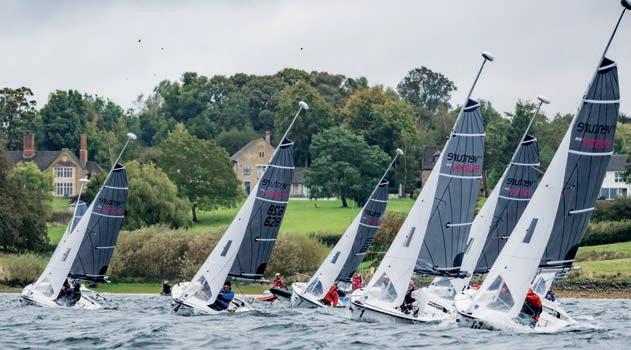
The RYA’s growing remit was further expanded with the launch of the RYA Motor Cruiser Scheme; a key development given the growth in this form of leisure boating. Aided by the growth in marinas and cruising, motorboats o ered ‘turnkey’ access to the water, with little in the way of any checking of competence, but the RYA approach, built on education rather than licencing, set a foundation for safer powerboating moving forward.
Another aspect of the RYA’s growing management of all areas of boating came when the RYA took over training and accreditation of the marine VHF system, an essential development as low-cost radio sets, both fixed and handheld, flooded into the market.
Increasingly questions were being asked about the accessibility to all areas of sport for the disabled. Thankfully, getting afloat, across almost every genre in boating, was something that could be opened up to all and again the RYA would be at the forefront of opening up access to the those with disabilities. Under the banner of the ‘Sailability’ programme, the RYA opened up all water-based activities, which was perfect timing given that sailing was about to become a Paralympics sport.
At the turn of the century life afloat was becoming increasingly dominated by discussions of climate change and how our waterborne activities were impacting the environment. Once again, the RYA would take the lead joining forces with British Marine to form The Green Blue initiative setting out in clear terms the problems our waters, both inland and at sea, were facing.
After the country voted in 2016 to leave the European Union, many of the freedoms that boating communities had enjoyed would all suddenly be the subject of a wide reaching process of renegotiation. The RYA was able to soften many of the potential issues that might have arisen, and though there would be the need for more control when planning to cross the Channel or North Sea, thanks to the RYA’s e orts, the new processes soon became normal practice.
Just how di erent the RYA will be in the future can be seen in the way that the old Dinghy Show morphed into the ‘Dinghy and Watersports Show’ (now held at Farnborough) in 2021, whilst the earlier investment made by the RYA into the new formats of sailing was rewarded with a gold medal at the Paris 2024 Olympic Regatta for Ellie Aldridge in the Women’s Formula Kite event.
Just the latest success for an Association that for 150 years has focused on making boating the best experience it can be and as accessible to as many people as possible.
Read the full story of the RYA at www.rya.org.uk/about-us/150-years
Hosted by Dee Ca ari MBE, RYA 150 is a special 12 episode podcast to celebrate the 150th anniversary celebrating the people, places and moments that have defined boating over the last century-anda-half. From legendary Olympic victories to the devastating storm that changed sailing safety forever, from pioneering women breaking barriers to the future of technology on the water - the RYA 150 Podcast dives into stories that have shaped our sport and inspired generations. Included in the series: WOMEN IN SAILING: A celebration of resilience, record-breakers and game-changers – driving
progress and charting a more inclusive future on the water. THE 1979 FASTNET: Revisiting one of the darkest yet most transformative events in sailing history. TECHNOLOGY AND THE FUTURE: From foiling to AI and eco-innovation, what lies ahead for our sport. www.rya.org.uk/about-us/150years/150-podcast










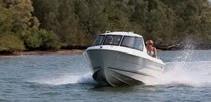













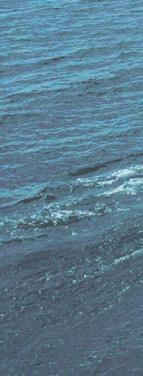


















By Dean Williams, boatcare manager at Deacons Marina
This year’s mild autumn has given many boaters a couple of extra months afloat. However, now that winter is on the horizon it’s crucial to start thinking about correct winterisation of your boat to avoid unnecessary damage and spare you time and money once spring rolls around.
Why winterise your boat?
Cold weather, damp conditions and inactivity can wreak havoc on a boat.
Systems like the engine, freshwater supply and electronics are vulnerable to the elements and lack of use. Damp air trapped inside can cause mould, mildew and corrosion, whilst freezing temperatures can damage plumbing, engines and other systems. The goal of winterising is to mitigate these risks, protect your investment and ensure that your boat is ship-shape when it comes to hitting the water again.
Your winterisation checklist
We’ve shared our steps for winterisation, but we recommend you keep a detail checklist of what you have and haven’t done – whether it’s draining water systems or disconnecting gas bottles, document everything you do. Leave notes or signs on systems which have been winterised, so nobody accidentally operates them before they’re ready.
1) Remove and store boat items
Store as much as possible in a secure and dry place. Soft furnishings can be prone to damp and mould if left on the boat, whilst valuables such as chart plotters, VHFs, sails, lifejackets and safety gear stored somewhere safe makes it easier to carry out safety checks and servicing throughout the winter.

2) Ventilation and dehumidification
Boats are prone to damp and mould when sealed up for long periods of time, but good ventilation can help avoid these problems. If your boat is on a mooring or in a yard without access to power, leave hatches or portholes slightly open to allow airflow (but take care to ensure they are still weatherproof). If your boat is in a secure marina with access to power, consider using a dehumidifier set to continuous drain mode (with a hose running to the sink to avoid the need for regular emptying).
3) Draining water systems
Water left in pipes, tanks or bilges can freeze, expand and cause damage, so begin by emptying bilges and ensuring they are dry. Next, drain freshwater tanks, removing remaining water from the pipes by opening all taps, and be sure to empty the heads (toilets) as well as deck showers.
For systems that can’t be completely drained, like water heaters or calorifiers, flush these with antifreeze (safe for drinking water systems) to protect pipes and pumps from freezing.
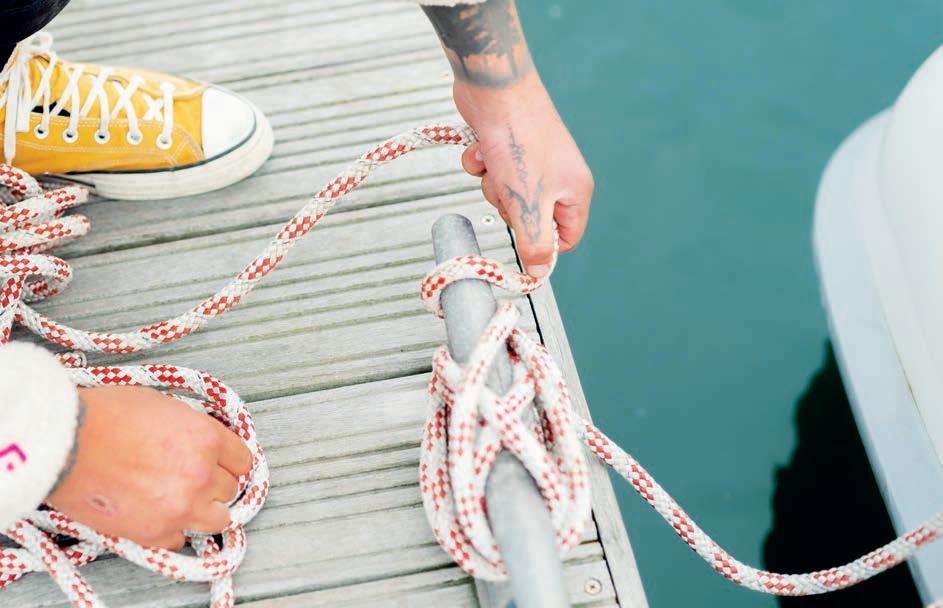
If your boat remains in the water over the winter, ensure all seacocks are closed tightly, whereas boats stored ashore should have seacocks left open to allow for drainage.
4) Protect the exterior
To protect your boat from the elements, remove canvas items like sprayhoods, dodgers and sail covers as they can become dirty when left exposed for long periods. If you leave sails on the boat, particularly a furling headsail, ensure they are properly secured to prevent them from becoming unfurled in high winds. A well-fitted cover over the cockpit can provide extra protection, especially if your boat is staying on a mooring. Double up on mooring lines, adding extra lines as a backup in case one fails, and check for any signs of leaks or damage to the hull.
5) Engine winterisation
Preparing the engine is one of the most important tasks when it comes to winterisation. Start by changing the oil and replacing the filters as old oil contains contaminants that can corrode the engine if left sitting. After this, flush the cooling system to remove any saltwater which can crystalise and cause blockages. If your engine is raw-water cooled, flush the system with antifreeze. Closed circuit cooling systems should also be topped up with antifreeze. In both cases, running the engine for a short period will help circulate the antifreeze through the system.
Fill your fuel tank to the maximum to prevent condensation from forming, which can lead to water contamination and bacterial growth (commonly known as diesel bug). There is some debate about whether it is better to leave tanks as low as possible due to the biocontent of diesel, but in our experience removing as much air as possible is the best way to prevent moisture from entering the tank. Adding a fuel stabiliser or anti-bug additive will also help keep the fuel clean over winter.
Additional tips for engine protection include smearing Vaseline on the fuel filler cap to prevent water ingress, spraying the engine with an anti-corrosion spray and removing the saltwater impeller. If you’re not confident performing these tasks yourself, it’s worth having a professional service your engine during the quieter winter months.
6) Batteries and electrical systems
Batteries discharge slowly over time, so if possible, remove your batteries from the boat and store them in a warmer environment. If they must remain onboard it’s important to keep them charged and to check on them regularly.
If your boat has shore power you can leave a smart batter charger connected to maintain the charge, or if storing your boat ashore without power solar panels provide a cost-e ective solution. Small solar panels rates at less than 10 per cent of the battery’s amp-hour capacity can be left permanently connected without a charge controller.
In addition to battery maintenance, take time to inspect and service other electrical systems, such as navigation lights, electronics and wiring. Disconnect and store any removable electrical items like lights, as damp conditions can cause corrosion in connections.
7) Regular winter inspections
Regular visits, even after your boat is winterised, are important to check for any issues. If your boat remains in the water inspect mooring lines for wear and adjust them as necessary to prevent chafing – we also recommend doubling up on mooring lines and ensuring fenders are well-placed to protect your boat during storms or high winds.
If your boat is ashore check the cover is secure, there are no leaks, and no unwanted visitors such as rodents. If your boat is in the water monitor bilges regularly and ensure the bilge pump is operational.

Whether you are gearing up for a transatlantic adventure, lining up for an o shore race or setting your sights on a full circumnavigation, your rig is one area where compromise simply is not an option.
Longer passages under sail place continuous strain on a yacht’s mast and rigging. Unlike shorter coastal trips, extended o shore sailing means enduring dynamic loads, primarily downwind and often with heavy swells, for thousands of miles. Without careful preparation and regular monitoring, even minor flaws in the rig can escalate into major issues at sea.
To understand what ‘ocean-ready’ really means, we spoke to Neil Brinsdon, Managing Director at Advanced Rigging and Hydraulics, who has advised many yacht owners - including ARC and World
Once o shore, you need to be entirely self-su cient. That means having the right spares, the right tools and the knowledge and confidence to use them.
Your o shore kit should include:
● Clevis and split pins
● Rigging terminals
● Dyneema lashings and spare halyards
● Rigging tape, shackles, tangs and friction rings
Do not neglect the tools: bolt croppers, spanners, screwdrivers and adjustable
ARC participants – on how to prepare their rigs to safely cross oceans.
Before thinking about provisioning or passage planning, book a comprehensive rig inspection by a qualified professional.
In fact, many insurance policies require one for o shore coverage.
Ideally, your inspection should be carried out in your home port well before you depart, giving you ample time to easily address any issues before you go. Depending on your yacht’s age and maintenance history, this could be
wrenches should be rust-free, functional and easy to access. Storing them deep in a locker will not help if you need them in an emergency. While mast climbs at sea are rare, they are occasionally necessary. Ensure the skipper and at least one crew member are comfortable with going aloft. Practice while in the marina, establish clear communication protocols and double-check safety equipment. Before setting sail, photograph key rigging componentsspreader bases, masthead, gooseneck - for reference in case something changes mid-passage.

PRE-VOYAGE DECK-LEVEL CHECK
In the final days before departure, carry out a detailed deck-level rig inspection with your crew. Check:
● Standing rigging and chainplates
● Running rigging, furlers and halyards
● Turnbuckles, tangs and spreaders
● Fasteners and cotter pins (secure and taped)
● Deck fittings and attachment points
Use a checklist specific to your yacht. Look for hairline cracks, corrosion, movement or fatigue. Feel for chafe around clutches and sheaves. Any UV-damaged or worn lines should be replaced.
This is also the time to check sheaves rotate freely, furlers run smoothly and all moving parts do what they are meant to. If it is not 100 per cent, fix it now – do not wait until you are underway.
We discuss important topics with marine industry experts who share their opinions and top tips to help you get the most from your boating.
anything from a visual check aloft to a full survey, including unstepping the mast.
Neil Brinsdon encourages owners to be involved in the process: “It is a great opportunity to learn more about your rig, get hands on experience and ask any questions, but make sure you also get a full written report noting any wear, replacements or red flags, so you can address these as soon as possible.”
If you plan to sail locally before departure, consider scheduling a second check closer to your leaving dateespecially if you have made any changes or pushed the rig hard in the interim.
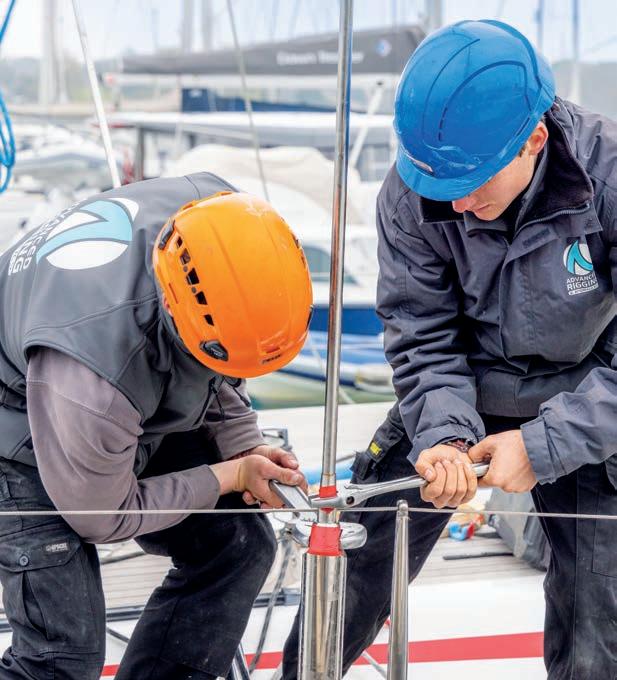
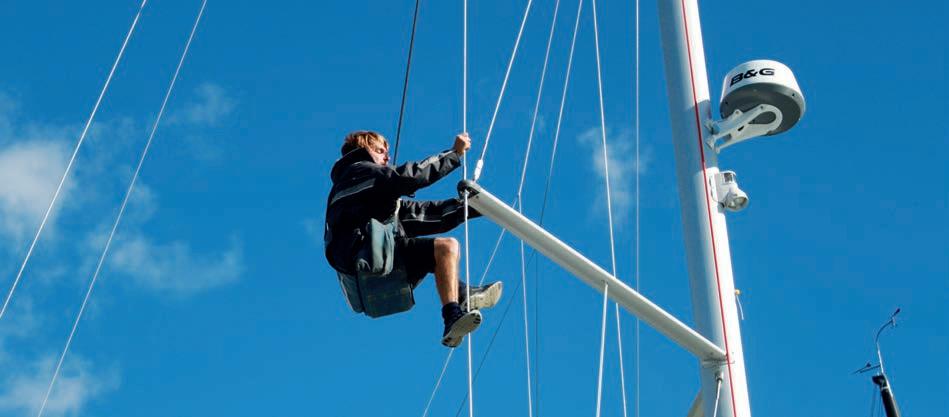
“With thorough planning, professional guidance and daily discipline, you will not only reduce your risk at sea, you will sail with confidence”
Out at sea, a quick five-minute rig check per watch can prevent any major failures. You do not need special tools - just your hands, eyes and a pair of binoculars.
Get the whole crew involved and trained to:
● Scan shrouds and stays for tension and strand separation
● Look for chafe or discolouration on halyards and sheets
● Listen for unusual creaks or vibration when under load
● Use the binoculars to inspect the masthead and spreaders
Trade wind sailing creates repetitive motion that can wear through lines or loosen fittings surprisingly fast. Preventers, reefing systems and boom controls should be checked regularly. This level of vigilance not only prevents emergencies, it gets every crew member contributing to the boat’s safety.
DO NOT SKIP THE POSTPASSAGE
Arriving is a big moment - but before you celebrate, your rig needs one more inspection. Use your original pre-departure checklist and compare notes and photographs. Look for:
● Hardware that is moved or worn
● Chafe in halyards or sheets
● Any elongation, corrosion or slack in fittings
Log your findings and schedule any needed repairs before your next passage. This is also the time to evaluate your rig’s o shore performance, what worked, what did not and what might need upgrading.
A seaworthy rig is not just a box to tick, it is central to your yacht’s o shore performance. With thorough planning, professional guidance and daily discipline, you will not only reduce your risk at sea, you will sail with confidence.
As Neil puts it: “When you are weeks from shore, prevention is always better than cure. A wellprepared rig is the foundation of both performance and safety o shore.”
Brought to you by
As the nights draw in, November is the perfect time to get your boat winter ready.

According to Jack Keane, Boatyard Manager at Cobb’s Quay Marina, tackling maintenance now will save time, money and stress come spring. Here are Jack’s top 10 tips for keeping your boat in top condition this winter.
CHECK YOUR ANODES
Anodes are your boat’s silent protectors – when they are worn or wired incorrectly, serious damage can follow.
“A good rule of thumb is if there is less than 50 per cent wear left, replace it,” says Jack. “Anodes are sacrificial parts –ignore them and you risk costly corrosion to key components.”
CHOOSE THE RIGHT ANODES FOR YOUR WATER
Not all anodes are created equal, and choosing the wrong type can render them useless.
“Zinc is for saltwater, aluminium for brackish and magnesium for freshwater.
It is an easy mistake to make but getting it right could save you thousands.”
SERVICE YOUR ENGINE EARLY
A well-serviced engine is the best insurance against breakdowns.
“Engine maintenance should include filters and oil changes, checking belts for wear and inspecting impellers. A winter service now means fewer surprises later.”
AVOID THE WINTER ‘DIESEL BUG’
Cold weather can cause fuel issues, but prevention is simple.
“Use a fuel stabiliser to stop diesel from degrading, and fill tanks to reduce condensation. Blocked filters always happen at the worst time – this avoids that.”
Cold, damp conditions can shorten battery life.
“Disconnect and trickle charge if possible. Also, clean and grease the terminals once a year with dielectric grease to maintain e ciency.”
DRAIN AND PROTECT YOUR WATER SYSTEMS
Frozen pipes and fittings can spell disaster.
“Drain water tanks and flush marine heads with antifreeze through the inlet and discharge hoses. It is a simple job that prevents expensive frost damage.”
GIVE YOUR HULL AND DECK SOME ATTENTION
Clean now, save fuel later.
“Pressure washing the underside removes growth that increases drag and fuel consumption. Winter is also ideal for stripping and greasing winches, and storing sails indoors to extend their lifespan.”



KEEP THE INTERIOR DRY
Moisture is a boat’s enemy over winter.
“Disposable dehumidifiers are coste ective, but electric ones give better results. They are the best way to prevent damp, mould and mildew.”
MAKE THE MOST OF MDL’S BOATYARD FACILITIES
Working under cover can make winter jobs far easier.
“The best facility is the shed – it removes weather delays. And MDL’s winter liftout package, with 40 per cent o , is a massive saving for boaters looking to stay ahead on maintenance.”
WINTERISE YOUR ENGINE – PROPERLY
If you only do one thing this winter, make it this.
“Winterise the engine with fuel treatment, an oil change, antifreeze, lubrication and protective spray. Check the anodes too – it is the best way to avoid rust, freezing damage and a springtime headache.”
By tackling these jobs early, beat the rush, make the most of quieter boatyards and keep your boat in top shape until launch day. More information on MDL’s winter o ers and services: www.mdlmarinas.co.uk/winter


This
year Hayling Island’s
Mengeham Rythe Sailing Club has been celebrating 75 years, while also dealing with the aftermath of one of the most significant floods in its history.
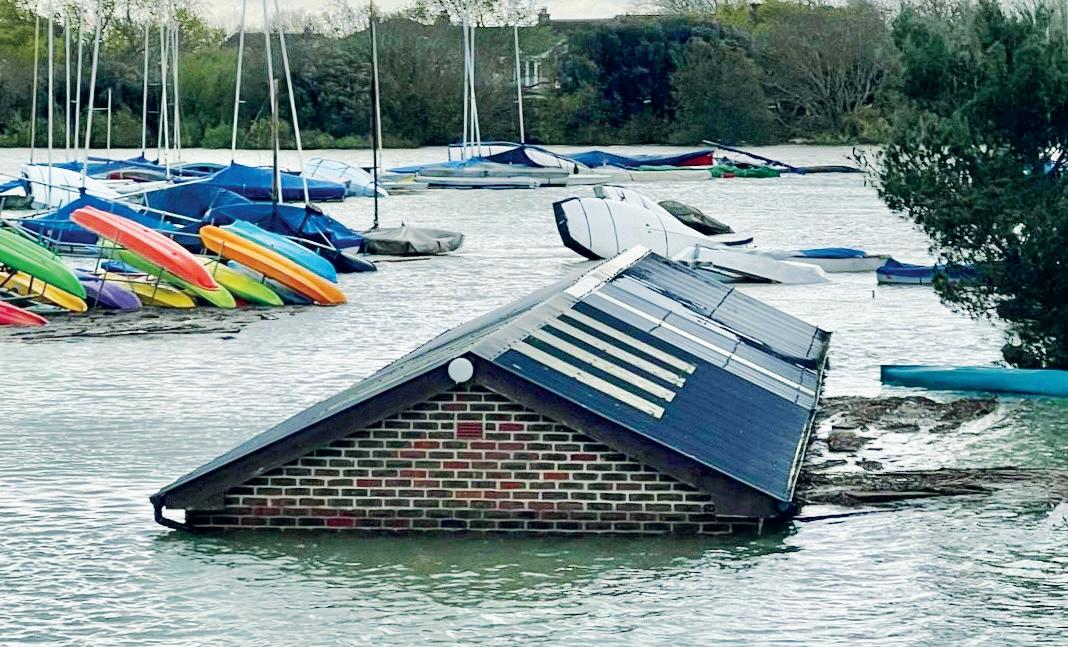
On a sun-drenched weekend in late June, Mengeham Creek came alive with celebration.
Bunting and flags fluttered in the breeze, sails danced on the waves, the air buzzed with stories that spanned generations, and laughter and music echoed across the harbour, as Mengeham Rythe Sailing Club marked its 75th anniversary - a milestone steeped in tradition, camaraderie and the enduring love of sailing.
Founded in 1950 by Dr. Alex Brenan, it was originally ‘Mengeham Rythe Fishing and Sailing Club’ and open to interested ‘boat owners of moderate means’ who shared a passion for the waters of Chichester Harbour.
For the first 10 years or so, fishing was the major activity, but this was later dropped as more people became interested in sailing, and over the years it has transformed from a humble fishing outpost to a thriving sailing community and a cornerstone of Hayling Island’s sailing scene. People are drawn to its unique location on a tidal creek, its welcoming spirit and hands-on ethos.
A CLUB FOR ALL
Dr Brenan was the first Commodore, and the property owner was Rear Admiral Fisher, who took on the role of President (the annual building rent at the time was £50!). The Rear Admiral moved from Hayling in the 1960s and the members managed to raise enough to buy the club and surrounding land and out-buildings for £6,000.
In 1973 a new, larger timber building was erected on the same site to cater for the growing membership. The current clubhouse was o cially opened in September 2003, and in spite of all the improvements since 1950, the club still holds dear the founder’s wish “A club for all of moderate means”. Membership fees were kept to a minimum to encourage local residents to join, and for a long while the fee was just £1.
In a letter in 1957, Dr Brenan wrote: “Racing was only weekends and always in the harbour. There were no ruthless competitions – it was always
good fun! We had occasional outings such as a run up to Emsworth to go ashore for a beer, tea parties at East Head and cockling parties on Pilsey Sands. At the clubhouse, we had no bar or properly organised kitchen; but the lady members were never to be found wanting in providing whatever was necessary!”
The anniversary jubilations in June began with a disco on the Friday evening, and after breakfast was served the next morning invited dignitaries began to arrive, including the Deputy Mayor of Havant - Paul Tansom and his wife, local Town Crier - Rosy Raines, Local Councillor - Mark Coates and Owen Davies (previously Commodore at Langstone Sailing Club) and his wife.
Also in attendance was Paddy Lamperd, who is 90-years-old and was the first ever junior member at the club. Another special guest was Rene Smith, wife of the late Roy Smith, who was a previous President of the sailing club (and for 30 years was also a volunteer at Hayling Lifeboat station, where his roles included Chairman and President). Rene is an incredible 101-years-old (but you would never know it!).
She said: “I am really enjoying my visit to the club today, I am so glad I was able to join the celebrations to mark this special occasion. It is such a relaxed and friendly atmosphere, and it has been lovely to meet up with so many people I have not seen for a long time.”
The Town Crier kicked o the event with an “Oh yay, oh yay” followed by a quick introduction, and the President Ian Grant told the story behind the history of the club. The Commodore, John Barnett, then cut the impressive anniversary cake and the celebrations began.
The two Hayling lifeboats joined the event mid-afternoon, and it was a wonderful sight to see the orange boats heading up the creek amongst the junior sailors. The lifeboats moored up on the pontoon, and families went to say hello and see the boats up close. The Deputy Major chatted to the crew and the volunteers enjoyed a swift ice cream to

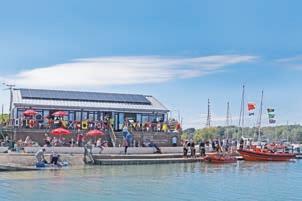

help them cool down, before the pagers went o and they had to dash o .
On Saturday evening the crowd came together to twist and shout to the Southbeat Beatles. The sunshine returned on Sunday afternoon, as did many of the members, who watched the main pursuit race, whilst being entertained by a witty swing singer.

Last year they experienced one of the most significant flooding events in their history. On the night of 8 April, a record high tide of 5.75m swept through Chichester Harbour, driven by strong Force 6 winds.
The combination of high-water levels and wind-driven surge overwhelmed the club’s natural defences, and the water level rose so high the car park was transformed into a pond, the ground floor of the clubhouse was devasted and many boats and equipment were badly damaged.
The club community responded with characteristic resilience, and the committee decided that even though the ground floor of the building needed months of work to repair the damage, the priority was to get the upstairs functional so that members could return and junior week could take place at the beginning of August – which is an annual event that members look forward to all year.
Commodore John Barnett is particularly proud to see how much the junior section has built up in the last few years: “You can see there are lifelong friendships being made… together we are a true family club.”
John has been Commodore at Mengeham for four years (he was asked to stay on an extra year past the usual three years to manage the rebuild after the flood). He believes sailing clubs are a great place to meet people, especially if you are new to the area; he still meets up with friends he made at the sailing club he joined as a teenager.
John said: “If you walk into Mengeham as a new member, you walk out with new friends. Everyone is like-minded and there is great camaraderie. This was evident in the aftermath of the flood – the first weekend the club was accessible, over 100 people turned up to help with the massive clear up operation and together we are now building a great clubhouse that will be home to fantastic times for decades to come.”
Even though there is still work to be done, the challenges the club has faced make the 75th anniversary even more special. The flood has become a poignant reminder of the club’s vulnerability, but also of its resilience - and they are looking forward to seeing the club going from strength to strength as it continues for another 75 years and more. www.mengeham.org.uk



As autumn settles in and the clocks go back, many boat owners understandably move their attention ashore. It is tempting to lock up, walk away and wait for spring, but winter does not have to be a season you simply endure. In fact, it can be one of the best times to give your boat the attention she deserves.
Winter is the ideal opportunity to show your boat - whether power or sail - some TLC and prepare her for the season ahead – even if that feels a long way o right now. Whether she is staying afloat or coming ashore, these quieter months are perfect for thorough checks, maintenance and repairs that will keep her running beautifully when it is time to head out again.
Winterisation is not just about getting your boat through the colder months – it is about preserving its condition, reliability and value. From salt and UV to wind, waves and vibration, boats work hard all year. Left unattended in winter, moisture and fluctuating temperatures can quietly cause costly damage.
“The best way to protect your boat over winter is to haul her out, cover her properly and make sure systems are drained, cleaned and checked,” says Paul. “Even if she is staying afloat, regular checks and preventative work are essential - a quick walk-through can spot leaks or developing issues before they escalate.”
A clean, dry boat will always fare better during periods of inactivity. Give her a thorough top-to-keel wash: scrub decks, non-slip areas, cockpit lockers, topsides and bathing platforms. Remove grime, salt and any fouling. Pay close attention to stainless fittings, cleats, rails and winches as corrosion can set in quickly if left unchecked.
We spoke to Paul Hardy at Ancasta Yacht Services to find out how using the ‘o ’ season wisely can protect your boat, boost performance and extend her lifespan.

Take care of your engine this winter
Canvas work - from sprayhoods and sail covers to cockpit enclosures and biminis - should be washed, dried and stored. Sails should be removed, as UV damage is a risk if left exposed, and stored in a dry, ventilated area to prevent mildew.
It is always best to carry out any repairs to either canvas or sails before storing to avoid any last-minute issues when spring comes around - and should something need replacing, there is ample time to get this done.
Below deck or in the cabin, remove perishables, prop open lockers and leave fridge and freezer doors ajar. Lift cushions, take home what you can and consider a heater, dehumidifier or moisture-absorbing crystals if the boat will be shrink-wrapped or sealed up for the winter.
Your deck equipment works hard all year and needs attention to remain safe and reliable.

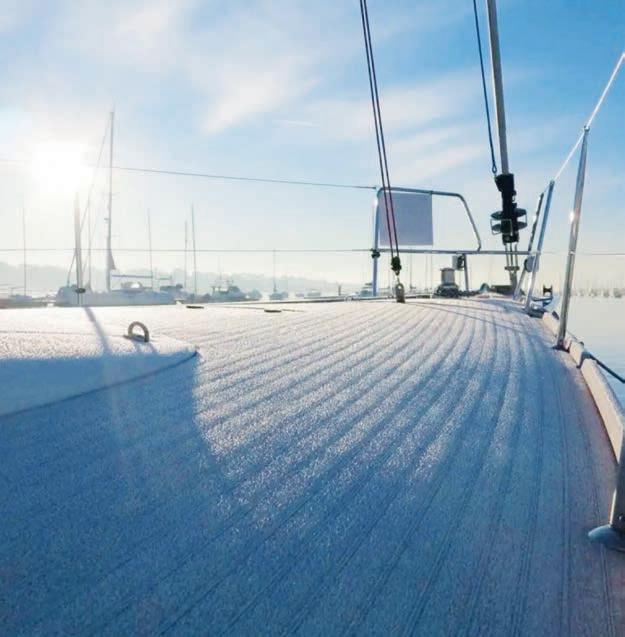
A dependable propulsion system (whether sail-assisted or all-engine) is your lifeline.
Motorboats: Check the windlass for smooth operation and signs of wear, lubricate moving parts and rinse away salt. Inspect davits, tender cranes and boarding ladders for corrosion or sti ness. Service hydraulics, check hoses and seals, and examine anchor chain, swivels and shackles for wear.
Sailing yachts: Complete all the above, plus additional rigging checks. Inspect standing rigging for cracks, rust staining or broken wire strands, and replace if near the 10-year mark. Wash and check running rigging for chafing or sti ness. Service winches, blocks, travellers and jammers so they operate smoothly and safely.
Under the waterline: If you are hauling out, take the opportunity for essential hull maintenance: Remove old antifoul, inspect and reapply.
Inspect for blisters, cracks or osmosis.
Replace anodes if more than 50 per cent worn - vital for corrosion protection.
Polish topsides and superstructure to shield against UV and restore shine.
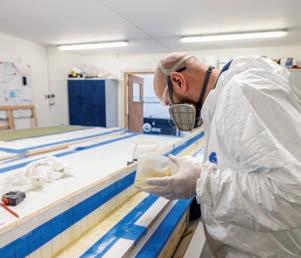

Engine service: Change oil and filters, flush coolant, check belts and replace impellers. Service fuel filters, gearbox or outdrive oil, and fog cylinders if storing long-term. For twin engines or high-performance set-ups, ensure both are synchronised. Outboard motors, including portable ones for tenders, will also need to be removed and serviced.
Fuel: Fill diesel tanks, add stabiliser and run engines to circulate treated fuel. Petrol-powered boats should be particularly careful with stabilisation to prevent phase separation.
Batteries: Disconnect, clean terminals, top up with distilled water (if lead-acid) and store in a cool, dry place - or use a trickle charger if left onboard.
Motorboat extras: Inspect stern gear, shafts, seals and P-brackets. Check trim tabs, bow/stern thrusters and jet drives.
PLAN AHEAD FOR A SMOOTH SPRING START
Whether you are preparing a weekend cruiser, a bluewater sailing yacht or anything in between, winter is the smartest time to invest in your boat so she is ready to go the moment you are.
“Our winter servicing slots fill up quickly, especially for major repairs or upgrades, so it is best to book early to avoid delays when spring arrives,” concludes Paul.

Part of the Ancasta Group, Ancasta Yacht Services is a professional yacht refit, repair and services company with a team of highly skilled craftsman, with excellent facilities based in Hamble, Southampton. ancasta.com/yacht-services

Dedicated to delivering the perfect nishing touch to the boating and waterfront market, Evocean o ers a truly unique collection of handcra ed British products. Many of these products are fully customisable o ering a bold yet personal statement to any nautical setting.
Thoughtfully designed to blend timeless style with everyday functionality, their range of nautical cushions, quick-drying micro bre towels and waterproof boat mats is perfectly suited to life by the water.
Add your choice of text, whether it is the name of your vessel or a warm ‘Welcome Aboard’ for a truly bespoke touch.

The lucky winner will receive a pair of nautical cushions, made to order in a choice of indoor or outdoor fabric. Available in three sizes and with more than 100 designs to choose from these pieces could be a feature of your space for many years to come!


seats that improve comfort and rigidity, the broad design o ers excellent stability for adventures on calm waters as well as rivers.

A backpack style carry bag with comfortable shoulder straps and paddle attachments makes it easy to transport the kayak to wherever you need to go.
When you get to your launch spot, the Colorado has everything you need for the perfect day out on the water. It is supplied with a hand pump with built-in manometer, detachable footrest, skeg and two breglass paddles. The user-friendly paddle
attachment system with pin closures allows you to easily secure the paddles when not in use, leaving your hands free to relax and take in the scenery.
An internal storage pouch helps to keep your possessions safe and dry from surprise splashes. A drain plug takes care of any excess water inside the kayak and a fulllength zipper along the side enables easy access to the side bladders, helping the kayak to dry more e ciently when back on dry land.
www.colemanuk.co.uk
To be in with the chance of winning this great prize enter below, at www.allatsea.co.uk/competitions or by email to editor@allatsea.co.uk with the subject header Evocean Competition. You can also enter via the All at Sea newsletter (sign up at www.allatsea.co.uk/aasnewsletter).
Q: Evocean’s nautical cushions are available in how many sizes?
A:
NAME:
ADDRESS:
EMAIL:
To be in with the chance of winning this great prize enter below, at www.allatsea.co.uk/competitions or by email to editor@allatsea.co.uk with the subject header Coleman Kayak Competition. You can also enter via the All at Sea newsletter (sign up at www.allatsea.co.uk/aasnewsletter).
Q: This kayak shares its name with which American state?
A:
NAME:
ADDRESS:
EMAIL:







The Southampton International Boat Show aimed to dazzle once again with luxury yachts, powerboats and cuttingedge marine innovation. Yet for visitors with a passion for fishing, it prompted a question: is the angling community being left behind?
Without a dedicated area, anglers were left to search across the sprawling event dominated by leisure craft and high-end brands. Exhibitors like Suzuki included a fishing simulator, o ering one of the few engaging nods to the sport, but overall fishing representation felt fragmented. This absence of its own section raises broader questions.
Winter fishing can be magical — crisp air, fewer crowds and some great species make for an unforgettable day on the boat. But before you cast your line, gear up for safety! Always wear a lifejacket and layer up in warm, waterproof clothing. Perform your regular checks — fuel, engine and safety gear — and pay extra attention to boat lights, handheld VHF, flashlight and first-aid kit. Pack extra provisions like spare clothing, food and, of course, a flask of your favourite hot drink. Share your float plan and stay weather-wise. With the right prep, you will stay warm, safe and ready to reel in those winter catches. Adventure awaits — fish smart and enjoy the season!
Could the cost of exhibiting be discouraging smaller fishing boat manufacturers and tackle retailers? With consumer spending shifting increasingly online perhaps the economics of in-person shows are squeezing out niche sectors like angling?
What we do know is that the appetite for accessible, sustainable water recreation continues to grow across the UK. Whether the show evolves to meet this demand remains to be seen.
Would you like to see a dedicated angling area at next year’s show? Let us know at editor@allatsea.co.uk

Send in your best angling pics every month – you and your catch! If yours is the winning photo, you will receive a prize courtesy of RAILBLAZA.
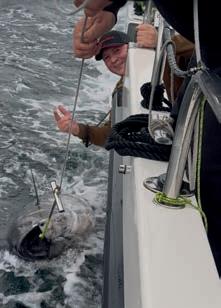

See more of your catches at
Send us your catch photo and you could win a prize from






As the chill of winter settles over the Solent, many local boat anglers turn their attention to the ever-reliable whiting. These sleek members of the cod family provide lively sport on light tackle and make for excellent eating. From late autumn through early spring, whiting shoals gather over the Solent’s clean and mixed grounds - o ering both steady action and tasty rewards for those prepared to brave the cold.
Whiting prefers clean-to-mixed ground in depths of 20 – 40ft. Productive areas in the Solent include the waters o Hill Head, Lee-on-the-Solent and around Ryde Middle.
Drifting with the tide helps locate the shoals; once you find a pocket of fish, anchor uptide of the shoal to keep your baits in the feeding lane. Whiting shoal tightly, so once you are on them, expect non-stop bites and busy rods.
Keep it simple - a two- or three-hook flapper rig armed with size 1–2 Aberdeen hooks is ideal. Whiting have small mouths, so avoid big hooks that can cost you bites. Add beads or luminous attractors for a touch of colour and visibility in deeper or murky water. In stronger tides, a long flowing trace helps present the bait naturally and tempt the larger fish holding slightly o the bottom.
Best Baits
Whiting are not fussy feeders, but certain baits stand out. Lugworm, ragworm, squid and mackerel strips are all proven choices. For a topperforming option, try a cocktail of squid and lugworm - it combines scent with visual appeal. Keep baits neat, slim and well-presented to avoid tangles and improve hookups, especially when fishing multiple rods.
Tactics & Tips
⚫ Fish into the tide and make sure your bait stays tight to the seabed - whiting rarely rise far from it.
⚫ A steady scent trail will draw fish in quickly, especially on the turn of the tide.
⚫ Expect bites in short bursts, often around slack water or as the flow begins to build again.
⚫ Light tackle and sensitive rod tips make the fight more enjoyable and help detect the whiting’s subtle, fast nibbles.
Final Word
With the right rig, bait and mark, a day’s whiting fishing in the Solent promises fast-paced sport and a fine meal at the end of it. Whether you are targeting them for fun or for the table, these winter visitors are sure to keep your rods nodding and spirits high.









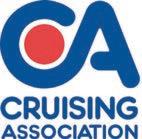
The Cruising Association has introduced the first phase of its upgraded website platform, which marks a significant step to provide an improved digital cruising experience for our members and visitors. Designed to significantly improve the CA’s online presence, the enhancements include:
Refreshed look and feel: a cleaner, more modern design that works seamlessly on phone, tablet or computer.
Faster performance: a more responsive site with faster load times.
New member hub: an upgraded ‘My Account’ area, centralising member details and boat information.
New navigation: restructured menus to help find key information more intuitively.
Revamped public site: an improved showcase into the CA community for prospective members.
Lucy Gray, Chief Operating O cer, described the changes as an evolution for the community, saying: “Our focus was on a robust and seamless transition, laying the groundwork for future innovations while delivering immediate benefits to users.
For our members, this is the first phase of building a more intuitive digital clubhouse. For the public, the website o ers a clearer window into our cruising community and what CA membership provides.”
Scheduled for a staggered implementation from late 2025 through spring 2026, the next phase of enhancement will further improve how members explore, plan and connect. Its centrepiece will be a geo-referenced cruising resource, allowing members to find information relevant to particular locations, from cruising guides to regulatory requirements, through an intuitive map-based interface. Find out more www.theca.org.uk/website-upgrade

Don't just give a gift - give cruising adventure, confidence and community. This year, choose the perfect present for the cruiser in your life.
THE GIFT OF CA
MEMBERSHIP: a year of better cruising - you cannot put a price on the CA’s cruising expertise, but we can make it even more rewarding. Readers of All At Sea enjoy 15 per cent o membership*. Simply use code AAS-CA-15 when you join at www.theca.org.uk/join
CA membership gives you access to expert knowledge and technical advice, digital cruising with CAptain’s Mate, a supportive cruising community around the world and much more. From vital trip planning and cruising resources to exclusive member savings and a London clubhouse - the CA has you covered. Discover the benefits at www. theca.org.uk/public/benefits
The CA invites members and nonmembers to CA House, our London headquarters, for a series of expert-led cruising seminars. Come and explore new destinations - all are welcome:
22 November 2025 / Norway Information Day: Whether you are intending to sail to Norway and want to learn all you need to know or would like to enjoy seeing the country’s spectacular scenery but from the comfort of a chairthis is the day for you. Discover what it is like to sail in Norway and what you need to know.
24 January 2026 / Channel Seminar: Aimed at those interested in cruising the Channel area whether experienced or not.
25 January 2026 / Your First Channel Crossing Seminar: Confidently undertake your first crossing of the English Channel with the CA. This seminar covers the best times to go, arrival destinations, preparation and passage execution, along with tips on cross-border paperwork, cruising the coast and the 2026 CA Channel Rallies.
31 January 2026 / Celtic Waters Seminar: Discover the classic ‘migration route’ along the west coast from Land’s End to Cape Wrath. Information will be shared on passage planning, key stopovers, navigational challenges and the unique opportunities presented by this stunning coastline.
7 February 2026 / European Inland Waterways Seminar: Tap into a wide-ranging programme, from first-time essentials like locks and licenses to destination inspiration for experienced cruisers. The seminar will cover everything from introducing cruising inland waters to regulations and information sources for planning.
21 - 22 March 2026 / Mediterranean Seminar: This two-day seminar – you can attend one day or both - is ideal for anyone dreaming of cruising the Med for the first time or those seasoned Med cruisers planning to explore new waters.
Find out more and book these seminars, along with plenty of other CA events, at www.theca.org.uk/events

CRUISING ALMANAC: trusted as the indispensable onboard reference for sail and motor cruisers, the Cruising Almanac provides comprehensive information for cruising in NW Europe. Covering the waters of the UK & Ireland, as well as north and west Europe from Bergen to Gibraltar, and the approaches to the Baltic, the Almanac is published in a convenient A4 size. Designed for easy reference, passage notes are prominently highlighted within the main text. Tidal stream plans and full tidal details for secondary ports are included alongside the relevant port information, while a supplementary booklet (included in the price) provides tide tables for 47 standard ports. The 2026 edition is available at £28 for members / £38 for non-members (RRP £44.50), plus postage, at www.theca.org.uk/catalog/ publications/almanac


Enjoy a complimentary, bite-sized edition of our members’ magazine, Cruising. Each quarter, we send curated snippets of expert tips, inspiring stories and cruising destinations to give you a snapshot of the CA’s vibrant worldwide community.
You can subscribe at www.theca.org.uk/ public/cruising



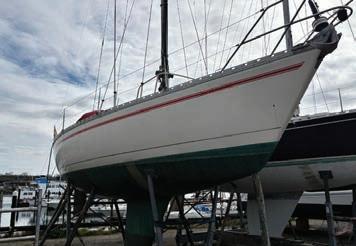





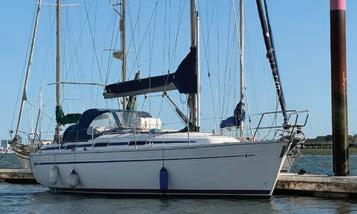
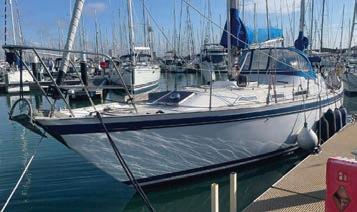


Send in your photos and you could be in All at Sea, on our Facebook page or in our weekly newsletter*. Send entries, with a caption, to editor@allatsea.co.uk. Each month’s winning photo will be included in the 2025 Photo of the Year reader vote.


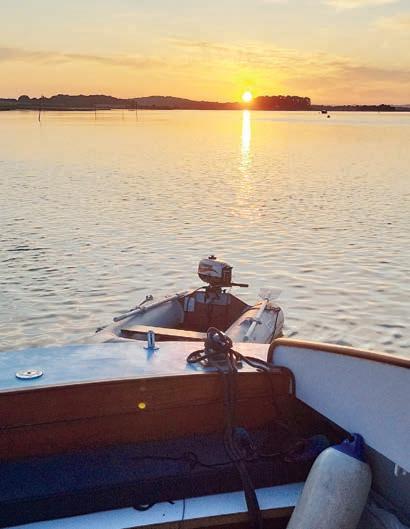
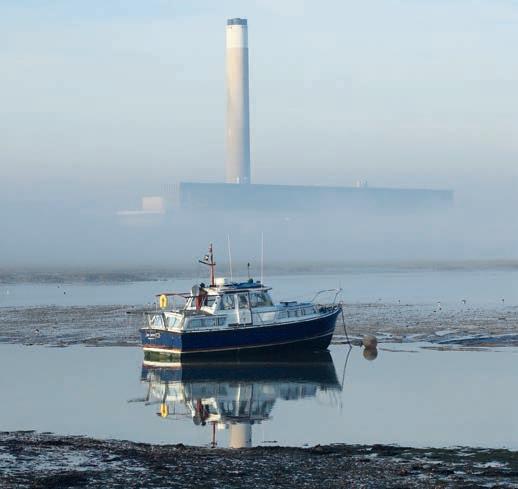





Place
1 Settee (4)
3 Product that removes dirt, etc (8)
7 Seaman’s measure of depth (6)
8 Woodland flower (8)
9 S agacious (4)
10 Digits of the foot (4)
1 2 Scraped gently (5)
15 Attitude, beliefs (5)
17 Request on an invitation (inits) (4)
19 D eceiver (4)
20 Allocate or distribute (work or resources) di erently (8)
21 L arge underground chamber (6)
22 Wooden board or platter (8)
23 G rape-producing plant (4)
1 Computer package or program, for example (8)
2 Contestant in a sports event (7)
3 B attle (6)
4 U nfavourable, harmful (7)
5 Elongate, pull out (7)
6 B read bun (4)
11 Alienate (8)
13 Popular pub entertainment (7)
14 Forceful (7)
Solve
in the
16 City in western Israel (3,4)
1 8 Nipper at the end of a claw (6)
20 Vessel made of wooden planks (4)
Each letter of the alphabet has been given a di erent number. Substitute numbers for letters to make words to complete the puzzle. The check-box and letters either side of the grid may help you keep track.
Using the letters in the wheel, you have ten minutes to find as many words as possible of three or more letters, none of which may be plurals, foreign words or proper nouns.
Each word must contain the central letter and no letters can be used more than once per word unless they appear in di erent sections of the wheel.
There is at least one nine-letter word to be found. Nine-letter word(s):

Check out our new & improved website, at:
With over 500 Tonnes of chain in stock, as well as a huge selection of rope, shackles, swivels, buoys and other mooring products, BGD are able to help you with most of your mooring & anchoring requirements
Calibrated Chain suitable for Windlasses
Tested, Stamped & Certificated, Hot Dip Galvanised, Calibrated Chain Suitable for use on windlasses
Titan Chain is BGD’s own brand. Sourced in China and made specifically for BGD, Titan chain is a high quality, Grade 40 chain that performs well on windlasses. Titan chain can be supplied c/w a test certificate on request.

Titan HDG 6x18.5 DIN766
£3.45 per mtr
Titan HDG 7x22 DIN766 £4.56 per mtr
Titan HDG 8x24 DIN766 £6.95 per mtr
Titan HDG 10x28 DIN766 £9.36 per mtr
Titan HDG 10x30 ISO £9.36 per mtr
Titan HDG 12x36 ISO £12.24 per mtr
Titan HDG 13x36 DIN766 £13.80 per mtr

SOLID ZINC grade 40, calibrated chain is manufactured in Italy and is coated with an increased layer of galvanising, giving it increased longevity. It’s smooth finish & calibration makes it perfect for use on windlasses.
SOLID ZINC is tested, stamped & certified. Certificates available on request.

MF Solid Zinc 6x18.5 DIN766 £4.90 per mtr
MF Solid Zinc 7x22 DIN766 £6.30 per mtr
MF Solid Zinc 8x24 DIN766 £8.80 per mtr
MF Solid Zinc 10x28 DIN766 £12.50 per m
MF Solid Zinc 10x30 ISO £12.50 per m
MF Solid Zinc 12x36 ISO £16.30 per m
MF Solid Zinc 13x36 DIN766 £17.80 per m




Titan 316 Stainless Steel Chain
6x18.5mm DIN766

GRADE 70 8x24
READY MADE
16mm Diam x 8mtr £29.78

Italian, Grade 70, 8x24 Anchor / Windlass Chain
MBL (Minimum Break Load) = 7000kg
Hot Dip Galvanised / Solid Zinc Coating DIN766 Calibrated c/w Test Certificate Available by the metre at £12.50 mtr
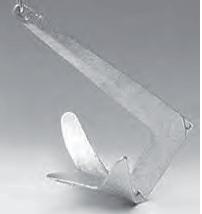


Ready spliced, braided black polyester with 15” soft eye & whipped end. Packed in pairs in a netted stowage bag.
* 1 Line Only
Used Chain available from 25mm to 50mm diameter.
Please call for details
16mm Diam x 10mts £35.71
16mm Diam x 15mts £50.47
18mm Diam x 8mts £33.41
18mm Diam x 10mts £40.13
18mm Diam x 15mts £56.93

20mm Diam x 8mts £42.65
20mm Diam x 10mts £51.50

20mm Diam x 15mts £37.80*
Railway Wheel Sinkers

7.5kg £182.40 10kg £299.00
15kg £399.00 20kg £496.80
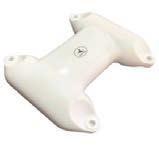


316 Stainless Voyager Anchor (DeltaType)
*Test Certificate supplied with chain on request. 2kg £69.20 5kg £139.00 10kg £240.00

16kg £384.00
20kg £480.00
25kg £625.00
Boarding Fender 45cm x 12cm

White or Navy £39.95 each
Ever Popular! ‘Titan’ Heavy Duty Boat Stands ’




We are back on the South Coast at Premier Southsea Marina, which is perfectly positioned to access the Solent.
Premier Southsea Marina is located opposite Hayling Island, at the tip of Portsea Island and is perfectly positioned for cruising in the Solent, taking in the historic sites of Portsmouth Harbour or heading south to the beautiful sandy beaches on the Isle of Wight. It is also just a short hop to Chichester Harbour with easy access to the sheltered East Head anchorages.
Onsite you will find two waterside restaurants, luxurious facilities, high-speed WiFi and a friendly community atmosphere. The marina is popular with deep-sea anglers due to its easy Solent access and onsite angling club.


Southsea Marina o ers in-water berthing for 315 boats, up to 17m long and has plenty of onshore boat storage. The marina is protected by an automatic cill gate, which raises and lowers, giving around six hours of access per tidal cycle with a waiting pontoon next to the marina entrance.
To ensure berth holders have access at all states of the tide, tows to and from the waiting pontoon can be requested in advance within their MyPremier account and are free of charge, current cill depth is also available on a live feed.

Southsea Marina provides a great spot to explore the historic city of Portsmouth, learn about 800 years of naval history at Portsmouth’s Historic Dockyard, the D-Day Story or travel by ferry to Gosport and visit the Explosion Museum of Naval Firepower.
Once a village, Southsea blends seamlessly into the city of Portsmouth,
Home to Southsea Marina Angling Club, keen anglers will find an array of essentials available in the marina reception and at the onsite chandlery.
The marina also has two restaurants, situated on the water’s edge. The Marina Bar o ers relaxed dining with a view, whether you are looking for a
with a unique range of shops and restaurants to uncover, and just a short drive along the seafront is Gunwharf Quays, a premium shopping outlet.
If you are looking for more outdoor pursuits the Hayling Island Ferry is within easy walking distance. Here you will find miles of beautiful coastal scenery to take in, whether that is walking, running or cycling.


few drinks, a light snack or a special evening meal. Bombay Bay is well known for its authentic Indian cuisine and o ers a takeaway service. A short drive away there is also a wide range of independent pubs, cafes and restaurants in the heart of Southsea. With high quality haul-out services available at the onsite boatyard, you will find a wealth of expertise amongst the marina’s friendly team and supporting businesses perfect for all maintenance needs.
Free dedicated parking
High-speed WiFi
Personal bathrooms
Full-service boatyard
Electricity
24hr security
Fuel pontoon
Two restaurants
Pump-out
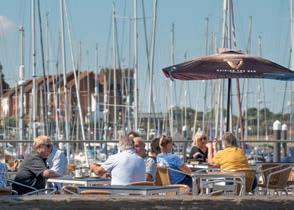



Southsea Marina’s approach is easy in most conditions, but is best from three hours before high water, or one hour after. The marina uses a cill gate to ensure the basin remains at a suitable level, but if access is not available there is a waiting pontoon.
Langstone Harbour’s channel entrance lies past the East Winner drying bank, and approximately one mile south of the harbour entrance you will see the Fairway Beacon, from here steer 353° to clear East Winner.
The harbour speed limit is 10 knots. From this point the entrance channel itself deepens, the marina’s approach is indicated by seven starboard-hand and nine port-hand markers. The marina approach channel speed limit is
JWS Marine Services – Marine engineering repair and maintenance
Portsmouth Marine Training –RYA training course provider
5 knots. It is important to note that anyone entering Langstone Harbour is liable for harbour dues, and these should be paid directly to the Langstone Harbour Board within 24 hours.
Perfectly positioned for access to the Solent, Southsea Marina has a great selection of day cruising destinations. To the south and west you will find the delights of the Isle of Wight with Bembridge, Cowes and Yarmouth all lovely destinations to spend a day. You can also head west towards the Hamble and enjoy an overnight stay at Premier Universal or Premier Swanwick Marina, or east towards Chichester Marina and enjoy relaxing in the hidden anchorages surrounding West Sussex.

1 Degree West Marine –Engineering, rigging and maintenance services, and an essentials chandlery. Bond Sails and Henderson Covers – Sailmaker, o ering upholstery and cover repair

“Lisa and I have berthed Seawolf at Southsea for the past 16 years; we brought her back from Barcelona in winter 2008/9. We have enjoyed our time here and hope to continue for many years to come. I have been around boats all my life, and I built my first canoe when I was 11. Prior to Seawolf, in 1985 I had a 47ft wooden ex Southampton harbour board survey vessel Mayflower. Our boating area is the Solent and the Isle of Wight; one of the advantages of Southsea Marina is the easy access to both. Other attractions are the comprehensive boating services and the two onsite restaurants: Marina Bar and Bombay Bay. Lisa and I have enjoyed the close working relationship with all the sta at Southsea, who are always courteous and willing to help. We have visited Port Solent, Chichester, Brighton and Swanwick, taking advantage of the 42 free days and nights.”
FURTHER INFORMATION
Marina Manager: Dave Frey Fort Cumberland Road, Eastney, Portsmouth, Hampshire PO4 9RJ
VFH Channel: 80 | T: 023 9282 2718 E: southsea@premiermarinas.com


Lisa and Kevin Bowden, Seawolf

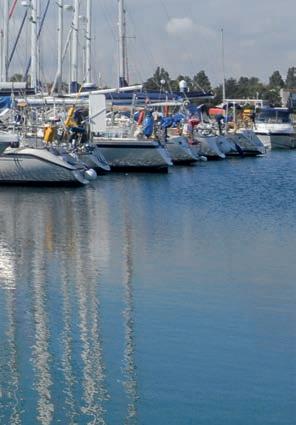

ST KATHARINE DOCKS
Manager: Paul Atkins
50 St. Katharine’s Way, London, E1W 1LA
T: 0207 264 5312
E: marina.reception@skdocks.co.uk
W: ww.skdocks.co.uk
PREMIER MARINAS FALMOUTH
Manager: Mark Evans
North Parade, Falmouth, Cornwall, TR11 2TD
T: 01326 316620
E: falmouth@premiermarinas.com
W: www.premiermarinas.com
PORT PENDENNIS MARINA
Manager: Mark Webster
Challenger Quay, Falmouth, Cornwall, TR11 3YL
T: 01326 211211
E: marina@portpendennis.com
W: www.portpendennis.com
MYLOR YACHT HARBOUR
Manager/contact: Culum Matheson
Mylor Churchtown, Falmouth, Cornwall, TR11 5UF
T: 01326 372 121
E: marina@mylor.com
W: www.mylor.com
FALMOUTH HAVEN
Contact: Daisy Gould
44 Arwenack Street, Falmouth, TR11 3JQ
T: 01326 310990
E: welcome@falmouthhaven.co.uk
W: www.falmouthhaven.co.uk
MAYFLOWER MARINA
Manager: Charles Bush
Plymouth, Devon, PL1 4LS
T: 01752 556633
E: info@mayflowermarina.co.uk
W: www.mayflowermarina.co.uk
PLYMOUTH YACHT HAVEN
Manager: Steve Cox
Shaw Way, Mount Batten, Devon, PL9 9XH
T: 01752 404231
E: plymouth@yachthavens.com
W: www.yachthavens.com
YACHT HAVEN QUAY, PLYMOUTH
Manager: Richard Brown
Breakwater Road, Plymouth, Devon, PL9 7FE
T: 01752 481190
E: boatyard@yachthavenquay.com
W: www.yachthavens.com
MDL QUEEN ANNE’S BATTERY
Manager: Alex Warner
Plymouth, Devon, PL4 0LP
T: 01752 671142
E: qab@mdlmarinas.co.uk
W: www.queenannesbattery.co.uk
SUTTON HARBOUR MARINA
Marina Manager: Mark Brimacombe
Sutton Harbour, Plymouth PL4 0DW
T: 01752 204702
E: marina@sutton-harbour.co.uk
W: www.suttonharbourmarina.com
KING POINT MARINA
Marina Manager: Mark Brimacombe
Brunel Way, Milbay, Plymouth, PL1 3EF
T: 01752 424297
E: marina@kingpointmarina.co.uk
W: www.kingpointmarina.co.uk
PREMIER MARINAS NOSS ON DART
Manager: Mike Smith Bridge Road, Kingswear, Dartmouth Devon, TQ6 0EA T: 01803 839087
E: noss@premiermarinas.com
W: www.premiermarinas.com
DOLPHIN BOATYARD
Galmpton Creek, Brixham, Devon T: 01803 842424
E: info@dolphinhaven.co.uk
W: www.dolphin-haven.co.uk
MDL BRIXHAM MARINA
Manager: Martyn Sherratt
Berry Head Road, Devon, TQ5 9BW T: 01803 882929
E: brixham@mdlmarinas.co.uk
W: www.brixhammarina.co.uk
MDL TORQUAY MARINA
Manager: Martyn Sherratt
Torquay, Devon, TQ2 5EQ
T: 01803 200210
E: torquaymarina@mdlmarinas.co.uk
W: www.torquaymarina.co.uk
WATCHET MARINA
Manager: Matt Driscoll
Harbour O ce, Watchet, TA23 0AQ T: 01984 322230
E: watchetmarina@westernmarinas.co.uk
W: www.westernmarinas.co.uk
WEYMOUTH MARINA BY BOATFOLK
Manager: Neil Bedwell
Commercial Road, Weymouth Dorset, DT4 8NA T: 01305 767576
E: weymouth@boatfolk.co.uk
W: www.boatfolk.co.uk
WEYMOUTH HARBOUR
Manager/contact - Ed Carter 13 Custom House Quay, Weymouth T: 01305 838423
E: weymouthharbour@dorsetcouncil.gov.uk
W: www.weymouth-harbour.co.uk
PORTLAND MARINA BY BOATFOLK
Manager: Paul Swain
Osprey Quay, Portland, Dorset, DT5 1DX
T: 01305 866190
E: portland@boatfolk.co.uk
W: www.boatfolk.co.uk
LAKE YARD MARINA
Manager/contact - Jenny Burrows
Lake Drive, Hamworthy, Poole, Dorset, BH15 4DT

T: 01202 674531
E: o ce@lakeyard.com
W: www.lakeyard.com
PARKSTONE BAY MARINA
Manager: Henry Cobley
Turks Lane, Poole, Dorset, BH14 8EW
T: 01202 747 857
E: info@parkstonebay.com
W: www.parkstonebay.com
POOLE QUAY BOAT HAVEN
Manager: Kerrie Gray
Poole Town Quay, Poole,Dorset, BH15 1HJ
T/F: 01202 649488
E: info@poolequayboathaven.co.uk
W: www.poolequayboathaven.co.uk
PORT OF POOLE MARINA
Manager: Kerrie Gray
Poole Quay Boat Haven, Poole Town Quay, Poole, Dorset, BH15 1HJ
T/F: 01202 649 488
E: info@poolequayboathaven.co.uk
W: www.poolequayboathaven.co.uk
SALTERNS MARINA LTD
Manager: Robert Golden
40 Salterns Way, Lilliput, Poole, Dorset, BH14 8JR
T: 01202 709971
E: reception@salterns.co.uk
W: www.salterns.co.uk
MDL COBB’S QUAY MARINA
Manager: Kelly Trewern
Hamworthy, Poole, Dorset, BH15 4EL
T: 01202 674299
E: cobbsquay@mdlmarinas.co.uk
W: www.cobbsquaymarina.co.uk
LYMINGTON YACHT HAVEN
Manager: Rupert Wagsta
Kings Saltern Road, Lymington, Hampshire, SO41 3QD
T: 01590 677071
E: lymington@yachthavens.com
W: www.yachthavens.com
BUCKLER’S HARD YACHT HARBOUR
Harbour Master: Wendy Stowe
Harbour Master’s O ce, Buckler’s Hard Yacht Harbour, Hampshire, SO42 7XB
T: 01590 616200
E: harbour.o ce@beaulieu.co.uk
W: www.beaulieuriver.co.uk
HAVEN QUAY, LYMINGTON
Manager: Matt Toms
Haven Quay Dry Stack, Mill Lane, Lymington, Hampshire, SO41 9AZ
T: 01590 677072
E: havenquay@yachthavens.com
W: www.yachthavens.com
DEACONS MARINA BY BOATFOLK
Contact name: Julie Spensley-Corfield
Bursledon Bridge, Southampton,SO31 8AZ
T: 023 80 402253
E: deacons@boatfolk.co.uk
W: www.boatfolk.co.uk
MDL HYTHE MARINA VILLAGE
Manager: Debbie Scott
The Lock Building, Shamrock Way Hythe, Southampton, Hampshire, SO45 6DY
T: 023 8020 7073
E: hythe@mdlmarinas.co.uk
W: www.hythemarinavillage.co.uk
473

beside
is inviting marine industry professionals to a Festive Event Space Showcase on 13 November. It will give the opportunity to experience two of the marina’s most unique event spaces, the Coronarium and the Floating Event Pontoon, just as the docks light up for the season. Once a domed chapel, the Coronarium is a two-level event space;
MDL OCEAN VILLAGE MARINA
Manager: Lauren McCann
Marina O ce, 2 Channel Way, Southampton, Hampshire, SO14 3TG
T: 023 8022 9385
E: oceanvillage@mdlmarinas.co.u
W: www.oceanvillagemarina.co.uk
MDL SHAMROCK QUAY
Manager: Barry Radband
William Street, Northam, Southampton Hampshire, SO14 5QL
T: 023 8022 9461
E: shamrockquay@mdlmarinas.co.uk
W: www.shamrockquay.co.uk
MDL SAXON WHARF
Manager: Lauren McCann Lower York Street, Northam, Southampton, SO14 5QF
T: 023 8033 9490
E: saxonwharf@mdlmarinas.co.uk
W: www.saxonwharf.co.uk
MDL HAMBLE POINT MARINA
Manager: Dominic Brown
School Lane, Hamble, Southampton Hampshire, SO31 4NB
T: 023 8045 2464
E: hamblepoint@mdlmarinas.co.uk
W: www.hamblepointmarina.co.uk
MDL PORT HAMBLE MARINA
Manager: Bertie Marsh
Satchell Lane, Hamble, Southampton Hampshire, SO31 4QD
T: 023 8045 274,1
E: porthamble@mdlmarinas.co.uk
W:www.porthamblemarina.co.uk
TOWN QUAY MARINA
Associated British Ports, Town Quay, Southampton, SO14 2AQ
T: 023 8023 4397
E: info@townquay.com
W:www.townquay.com
a 17m floating platform complete with a stretch tent canopy and festive lighting. The Event Space Showcase coincides with the annual St Katharine Docks Christmas Lights Switch-On, creating a magical backdrop complete with a live choir and a special visit from a festive guest bearing gifts for younger guests.
MDL MERCURY YACHT HARBOUR
Manager: Debbie Burns SatchellLane, Hamble, Southampton, Hampshire, SO31 4HQ T: 023 8045 5994
E: mercury@mdlmarinas.co.uk W: www.mercuryyachtharbour.co.uk
PREMIER MARINAS SWANWICK
Manager: Graham Bristowe Swanwick (on the Hamble) Southampton, Hants, SO31 1ZL T: 01489 884081 E: swanwick@premiermarinas.com W: www.premiermarinas.com
HAMBLE YACHT SERVICES
Port Hamble, Hamble,Southampton, Hampshire, SO31 4NN T: 02380 201501 E: info@hysgroup.co.uk W: www.hambleyachtservices.co.uk
PREMIER MARINAS UNIVERSAL
Manager: Martin Bowman Crableck Lane, Sarisbury Green, Southampton, Hampshire, SO31 7ZN T: 01489574272 E: universal@premiermarinas.com W: www.premiermarinas.com
HASLAR MARINA BY BOATFOLK
Manager: Ben Lippiett
Haslar Road, Gosport, Hampshire, PO12 1NU T: 023 9260 1201 F: 023 9260 2201
E: haslar@boatfolk.co.uk W: www.boatfolk.co.uk
PREMIER MARINAS GOSPORT
Manager: Jonathan Walcroft Mumby Road, Gosport, Hampshire, PO12 1AH T: 023 9252 4811 F: 023 9258 9541
E: gosport@premiermarinas.com W: www.premiermarinas.com


Aquavista’s marina teams and customers were honoured at the third Aquavista in Bloom Awards Ceremony, recognising outstanding e orts in sustainable gardening and community engagement.
The initiative encourages marinas to embrace the principles of Reduce, Reuse and Regrow, transforming their spaces with vibrant floral displays and eco-friendly projects.
Thanks to sponsor Towergate Insurance, each Aquavista marina received a ‘Let’s Grow Wild’ starter kit, including bug hotels and wildflower seeds, helping teams create pollinator-friendly zones and thriving habitats for wildlife.
The three Outstanding Overall Site winners for each region were: Kings Waterside & Marina (North), Kings Bromley Waterside & Marina (Midlands) and Poplar Waterside & Marina (South). Each received £150 to host a celebratory party for their crew and customers.
Other category winners included a Special Recognition Customer Award presented to one moorer from each region to recognise their contributions.
Steve de Polo, Chief Executive of Aquavista, said: “Once again, we have seen overwhelming support for Aquavista in Bloom. It is inspiring to witness our teams and customers come together to transform our marinas into vibrant, welcoming spaces.
“Their upcycling ideas and gardening e orts show incredible care and creativity; this is what makes our marinas truly special.”
Elisa Hadland, Head of Partnerships at Towergate Insurance, added: “2025 has been another fantastic year for Aquavista in Bloom. Each display reflects the unique personality of its marina and local community. It is wonderful to see so many berth holders enjoying the space and getting involved.”
Craobh Marina, on Scotland’s west coast, has been purchased by Brian and Sheila Norton and their three adult children. They have plans to expand the marina’s capacity and make a series of upgrades.
St Olaves Marina, in Norfolk, has been fined following an incident in which a man lost his finger during a boat lifting operation in March 2023. The Health and Safety Executive described the incident as “wholly avoidable”. The company was fined £2,000 and ordered to pay £5,700 in costs plus an £800 victim surcharge.
Marina Port Valencia continues its improvement process with the installation of a new mooring system on the central platform of Marina City and is preparing to add a new platform in front of Veles e Vents, two key elements that will improve the safety and operability of the marina.
As one green energy Demonstrator finishes its summer monitoring at Falmouth Harbour’s test site for o shore renewables another model has been deployed at FaBTest.
CableSpring is an integrated buoyancy and cable protection system designed
Walcon Marine has played its part in the Port of Dover’s Dover Western Docks Revival project.
Walcon’s role was undertaken in two phases. The first was the installation of pontoons to accommodate berths for up to 250 boats in the outer harbour, which took place in 2024. The second phase involved the dredging of the adjacent Wellington Dock followed by the installation of a new marina, which was completed this summer.
The marina for Wellington Dock (pictured) is the standout feature of the town’s waterfront transformation and was designed, built and installed by Walcon. 135 new berths complement the others in the adjacent Outer Marina, taking
AQUAVISTA ROYAL CLARENCE WATERSIDE & MARINA
Weevil Lane, Gosport, Hampshire, PO12 1AX
T: 023 9252 3523
E: royalclarence@aquavista.com
W: www.aquavista.com
PREMIER MARINAS PORT SOLENT
Manager: Mark Phillp
South Lockside, Port Solent, Portsmouth,Hampshire, PO6 4TJ
T: 023 9221 0765
F: 023 9232 4241
E: portsolent@premiermarinas.com
W: www.premiermarinas.com
PREMIER MARINAS SOUTHSEA
Manager: Dave Frey
Fort Cumberland Road
Portsmouth, Hampshire, PO4 9RJ
T: 023 9282 2719
F: 023 9282 2220
E: southsea@premiermarinas.com
W: www.premiermarinas.com
GUNWHARF QUAYS MARINA
Manager: Carl Jarmaine
for submarine dynamic power cables that connect floating o shore wind turbines to the grid. FaBTest is a 1.5km area of seabed 4.5km o land in Falmouth Bay leased by the Harbour from the Crown Estate to allow real-world testing of devices related to renewable energy and associated equipment.
Fiji’s Port Denarau Marina has announced the completion of its $6 million mega yacht berth expansion. The marina now o ers 62 private berths, with 27 dedicated to superyachts over 79ft.
Turkey’s Çeşme Marina has once again been awarded the internationally recognised Blue Flag for 2025. Ongoing initiatives including the planting of mussels, trepangs and coral help improve water quality and support biodiversity.
Florida’s Cannons Marina has been acquired by Ingman Marine, its fourth location , expanding its operations on the Gulf Coast of Florida.
You can read more marina news at www.allatsea.co.uk/category/ marina-news
the total number of new berths to almost 400 across the site.
With the Port of Dover being a highly sensitive historic environment, the DWDR scheme was designed to minimise the loss of historic character, which included the retention of the Wellington Dock with a new navigable channel connecting it to the new marina.
Specialist heritage experts were involved to oversee the excavations and ensure investigations were conducted in a controlled environment.
With UK Government planning approval and supported by a mix of private finance and European Union grant funding, DWDR is transforming the waterfront to ultimately attract a host of leisure
COWES HARBOUR SHEPARDS MARINA
Manager: Jock Ra erty
Medina Road, Cowes, Isle of Wight, PO31 7HT
T: 01983 297821
E: shepards.chc@cowes.co.uk
W: cowesharbourshepardsmarina.co.uk
ISLAND HARBOUR MARINA
Manager: Danie Erasmus Mill Lane, Newport, Isle of Wight, PO30 2LA
T: 01983 539994
E: info@island-harbour.co.uk
W:www.island-harbour.co.uk
BEMBRIDGE HARBOUR
Jack Miskin, Harbour Master The Duver, St Helens, PO33 1YB
T: 01983 872828
E: mail@bembridgeharbour.co.uk
W: www.bembridgeharbour.co.uk
YARMOUTH HARBOUR
Harbour O ce, The Quay, Yarmouth, Isle of Wight, PO41 0NT
T: 01983 760321
E: info@yarmouth-harbour.co.uk
W: www.yarmouth-harbour.co.uk
VHF: Ch 68 (harbour), Ch 15 (water taxi)
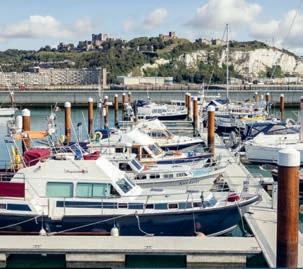
facilities as well as a new cargo terminal and distribution centre. DWDR is the single biggest investment ever undertaken by the Port of Dover with approximately £250m committed for its delivery.
AQUAVISTA BIRDHAM POOL
WATERSIDE & MARINA
Chichester, West Sussex, PO20 7BG T: 01243 512310
E: birdhampool@aquavista.com W: www.aquavista.com
LITTLEHAMPTON MARINA
Berthing Manager: Darren Humphries Ferry Road, Littlehampton, West Sussex, BN17 5DS T: 01903 713553 F: 01903 732264
E: sales@littlehamptonmarina.co.uk W: www.littlehamptonmarina.co.uk
LITTLEHAMPTON YACHT CLUB
Rope House, Rope Walk Littlehampton, West Sussex BN17 5DH T: 01903 732 926 F: 01903 725 911
E: fiona@littlehamptonyachtclub.co.uk W: www.littlehamptonyachtclub.co.uk
PREMIER MARINAS BRIGHTON
Manager: Mike Hatch
West Jetty, Brighton, East Sussex, BN2 5UP
T: 01273 819919 F: 01273 675082
Gunwharf Quays, Marina O ce Portsmouth, Hampshire, PO1 3TZ
T: 02392 836732
E: gwqmarina@incentive-fm.com
W: www.gunwharf-quays.com/marina
COWES YACHT HAVEN
Manager: Katy Ednay
Vectis Yard, High Street, Cowes, PO31 7BD
T: 01983 299975
E: berthing@cowesyachthaven.com
W:www.cowesyachthaven.com
VHF: Channel 80
EAST COWES MARINA BY BOATFOLK
Manager: Mike Townshend Britannia Way, East Cowes
Isle of Wight, PO32 6UB
T: 01983 293983
F: 01983 299276
E: eastcowes@boatfolk.co.uk
W: www.boatfolk.co.uk
MDL NORTHNEY MARINA
Manager: Tom Ward Northney Road, Hayling Island, PO11 0NH T: 023 9246 6321
E: northney@mdlmarinas.co.uk
W: www.northneymarina.co.uk
MDL SPARKES MARINA
Manager: James Rizzi
38 Wittering Road, Hayling Island Hampshire, PO11 9SR
T: 023 9246 3572
E: sparkes@mdlmarinas.co.uk
W: www.sparkesmarina.co.uk
PREMIER MARINAS CHICHESTER
Manager: Andrew Collumbell Birdham (Chichester Harbour) West Sussex, PO20 7EJ T: 01243 512731
E: chichester@premiermarinas.com
W: www.premiermarinas.com
E: brighton@premiermarinas.com
W: www.premiermarinas.com
PREMIER MARINAS EASTBOURNE
Manager: Dan Heckford
Sovereign Harbour, North Lockside, Pacific Drive, Eastbourne, BN23 5BJ T: 01323 470099 F: 01323 470077
E: sovereignharbour@premiermarinas.com
W: www.premiermarinas.com
SMALL BOATS WELCOME
NEWHAVEN MARINA
Manager/Contact: Russell Levett
Newhaven Marina, The Yacht Harbour, Fort Road, Newhaven, BN9 9BY
T: 01273 513 881
E: info@newhavenmarina.co.uk
W: www.newhavenmarina.co.uk
LADY BEE MARINA, SHOREHAM PORT
Manager: Julian Goldie
Lady Bee Marina and Chandlery, 138-140
Albion Street, Southwick, BN42 4EG T: 01273 591705
E: LBChandlery@shoreham-port.co.uk W:www.shoreham-port.co.uk/chandlery

GILLINGHAM MARINA
Manager: Chris Aldous
173 Pier Road, Gillingham,
Kent ME7 1UB
T: 01634 280022
E: berthing@gillingham-marina.co.uk
W: www.gillingham-marina.co.uk
MDL CHATHAM MARITIME MARINA
Manager: Emma Powell
The Lock Building, Leviathan Way, Chatham Maritime, Kent ME4 4LP
T: 01634 899200
E: chatham@mdlmarinas.co.uk
W: chathammaritimemarina.co.uk
MEDWAY YACHT CLUB
Contact: Sue Bannister
Lower Upnor, Rochester, ME2 4XB
T: 01634 718399
W:www.medwayyachtclub.com
PORT OF DOVER MARINA
Manager: Chris Windsor
Dover Marina O ce Esplanade
Dover Kent CT17 9FS
T: 01304 241663
E: marina@portofdover.com
W: portofdover.com/marina
MDL PENTON HOOK MARINA
Manager: Benedict Moran Staines Road, Chertsey, Surrey KT16 8PY
T: 01932 568681
E: pentonhook@mdlmarinas.co.uk
MDL WOOLVERSTONE MARINA
Manager: Shane Cheshire
Woolverstone, Ipswich, Su olk IP9 1AS
T: 01473 780206
E: woolverstone@mdlmarinas.co.uk
W: www.woolverstonemarina.co.uk
LOWESTOFT BEACON MARINA
Manager: Lucy Edmonds School Road, Lowestoft, Su olk NR33 9NB
T: 01502 580300
E: lowestoftbeacon@abports.co.uk
W: www.beaconmarinas.co.uk
FOX’S MARINA & BOATYARD
Marina Manager: Lee Gilson
Fox’s Marina, Ipswich Su olk IP2 8SA T: 01473 689111
E: foxs@foxsmarina.com
W: www.foxsmarina.com
FAMBRIDGE YACHT HAVEN
Manager: Danyal Adams Chelmsford, CM3 6LU T: 01621 740370
E: fambridge@yachthavens.com
W: www.yachthavens.com
ABERYSTWYTH MARINA
Manager: Adam Knowles
NEYLAND YACHT HAVEN
Manager: James Cotton Brunel Quay, Pembrokeshire SA73 1PY T: 01646 601601
E: neyland@yachthavens.com W: www.yachthavens.com
PORT DINORWIC MARINA
Dock Manager: Kevin Roberts Y Felinheli, Gwynedd LL56 4JN T: 01248 671500
E: sharon@portdinorwic.co.uk W: www.port-dinorwic.co.uk
BURRY PORT MARINA
Harbour Master: Robert Hockey
The Harbour O ce, Burry Port Carmarthenshire T: 01554 835 691
E: Info@themarinegroup.co.uk W: www.themarinegroup.co.uk
BANGOR MARINA
Manager: Kevin Baird
Bangor, Co. Down T: 02891 45329
E: bangor@boatfolk.co.uk
W: www.boatfolk.co.uk
CARRICKFERGUS MARINA
Harbour Master: Ryan Hack
Marina Manager: Karen Steelen
3 Quayside, Carrickfergus BT38 8BJ
T: 028 9336 6666
E: harbour.master@midandeastantrim.gov.uk
W: www.midandeastantrim.gov.uk
RHU MARINA
Contact: Suzanne Bell
Rhu, Helensburgh G84 8LH
T: 01436 820238
E: rhu@boatfolk.co.uk
W: www.boatfolk.co.uk
LARGS YACHT HAVEN
Manager: Dave Hewitt Irvine Road, Largs Ayrshire KA30 8EZ T: 01475 675333
E: largs@yachthavens.com
W: www.yachthavens.com
TROON YACHT HAVEN
Manager: Stephen Bennie The Harbour, Troon Ayrshire KA10 6DJ T: 01292 315553 E: troon@yachthavens.com
W: www.yachthavens.com
MDL SANT CARLES MARINA
Manager: Nicolas Gonzalez Ctra Poble Nou s/n, Apartat de Correus 192, 43540 Sant Carles de la Ràpita, Spain
T: (0034) 9777 45153
T (UK): 023 8045 0227 enquiries@santcarlesmarina.com W: www.santcarlesmarina.com





























MARINARA
Front Desk: Federica Civilla Via Marinara 11, Marina di Ravenna, 48122 Italy
T: (0039) 0544 531644
E: info@marinara.it
W: www.marinara.it







Y Lanfa Aberystwyth, Trefechan SY23 1AS T: 01970 611422
E: aberystwythmarina@westernmarinas.co.uk
W: www.westernmarinas.co.uk
CARDIFF MARINA
W: www.pentonhookmarina.co.uk
MDL WINDSOR MARINA
Manager: John Harris
Maidenhead Road, Windsor Berkshire SL4 5TZ
T: 01753 853911
E: windsor@mdlmarinas.co.uk
W: www.windsormarina.co.uk
MDL BRAY MARINA
Manager: John Harris Monkey Island Lane, Bray Berkshire SL6 2EB
T: 01628 623654
E: bray@mdlmarinas.co.uk
W: www.braymarina.co.uk
AQUAVISTA GLASSON
WATERSIDE & MARINA
School Lane, Glasson Dock, Lancaster, Lancashire LA2 0AW
T: 01524 751491
E: glasson@aquavista.com
Manager: Andy Coles OBE
Watkiss Way
Cardi CF11 0SY T: 02920 396078
E: cardi marina@westernmarinas.co.uk
W: www.westernmarinas.co.uk
CONWY MARINA
Manager: Jon Roberts
Conwy Marina, Ellis Way LL32 8GU
T: 01492 593000
E: conwy@boatfolk.co.uk
W:www.boatfolk.co.uk
MILFORD MARINA
Manager or contact: Melanie Durney Milford Haven, Pembrokeshire SA73 3AF Tel: 01646 696312
E: enquiries@milfordmarina.com W: www.milfordmarina.com
PENARTH MARINA
PORTISHEAD MARINA
Manager: Simon Davis
Portishead, Bristol BS20 7DF
T: 01275 841941
E: portishead@boatfolk.co.uk
W: www.boatfolk.co.uk
ROYAL QUAYS MARINA
Manager: Matt Simms
North Shields, Tyneside NE29 6DU T: 01912 728282
E: royalquays@boatfolk.co.uk W: www.boatfolk.co.uk
AQUAVISTA HULL WATERSIDE & MARINA
Warehouse 13, Kingston Street, Hull
Yorkshire HU1 2DQ
T: 01482 609960
E: hull@aquavista.com
JACHTHAVEN BIESBOSCH
Manager: Maarten Voskuil Nieuwe Jachthaven 54924 BA, Drimmelen, NL
T: +31 (0)162 682249
E: info@jachthavenbiesbosch.nl W: www.jachthavenbiesbosch.nl
WANT YOUR MARINA INCLUDED HERE? SCAN

W: www.aquavista.com
LIVERPOOL MARINA
Manager: Stuart Jones Penarth
Vale of Glamorgan F64 1TQ T: 02920 705021
E: penarth@boatfolk.co.uk
W: www.boatfolk.co.uk
W: www.aquavista.com

Manager: Daniel O’Dea
Liverpool Marina, Coburg Wharf, L34BP
T: 0151 707 6777
E: reception@liverpoolmarina.com
E: manager@liverpoolmarina.com W: www.liverpoolmarina.com









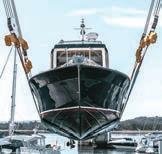
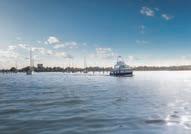



























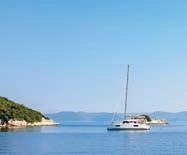


Every month Neil Chapman, founder of Boatshed.com, discusses important topics in the marine
industry and o ers advice for buying and owning boats.

Neil Chapman considers the geometry of movement.
As a sailor, I think about how much space boats take up on water. As a driver, when sitting in the usual crawl of tra c, I wonder why cars pack in so badly. And as a citizen, I look at drones buzzing overhead and ponder – is this the future?
This brings me to question how much movement can you fit into a given slice of the world and how many units can you move per hour? Call it transport density, it is the bluntest way to compare boats, cars and drones.
The answers are not polite - boats lose, cars muddle and drones multiply.
On water
Vessels need wide spacing, low speeds and sparse corridors. The throughput ceiling is brutally low which is why boats lose every density contest. On e ciency, they are finished.
But boats are not about e ciency, they are about independence. The one form of mobility that does not collapse into corporate dependency. Cars rely on oil companies and state-owned roads, drones require centralised air-tra c systems and
telecoms links, while boats just need a hull, some water and enough competence to steer. Boats are freedom machines; a way to slip the net of corporate systems and move on your own terms.
On the ground
Cars equally are not e cient, most carry just one person, with cities carved into dense networks of lanes to compensate. The result? Roads sit comfortably above water, but nowhere near air. Even if I concede there may be three people per vehicle, throughput is still a third of what air corridors o er.
And yet, cars survive because they are everywhere and infrastructure bends to them.
In the sky
Here, everything changes. Every 100 feet of altitude adds another layer of lanes. Four layers means four times the capacity, 10 layers, 10 times. It scales without limit. The sky is an expandable motorway system no civil engineer can match.
I am talking about low-weight drones, not piloted aircraft. Real aviation operates with far greater separation standards, and rightly so. A hundred feet of vertical spacing might make sense for
Unsurprisingly, as freedom machines, boats remain the
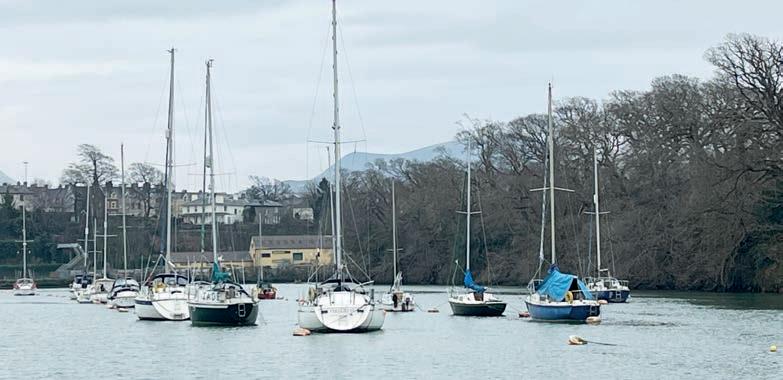

Cars are not e cient, but infrastructure bends to them
buzzing quadcopters, but not for passenger jets with humans onboard.
The drone numbers look huge – four million units an hour in just 100 square miles of lowaltitude airspace - because they are based on tight clearances that only work at the lighter end of the spectrum.
Scalable, stackable and brutally e cient, drones are great for last-mile delivery, inspection and logistics, but nobody loves them. Tied to images of bombed houses and military footage, they feel less like infrastructure and more like intrusion. I concede they have endless possibilities - decongested cities, instant deliveries, autonomous aerial taxis, medical supplies etc – but when you picture millions of them in the sky, it does not look like progress; it feels like a migraine.
The winner?
Drones may dominate e ciency, but no one will cheer them. They are the buzzing backdrop to someone else’s business plan. Cars take the middle ground - they already own the map. Although boats are the tra c density losers, they remain for me the winner; the last way to move without asking anyone first.
“Boats are freedom machines; a way to slip the net of corporate systems and move on your own terms”
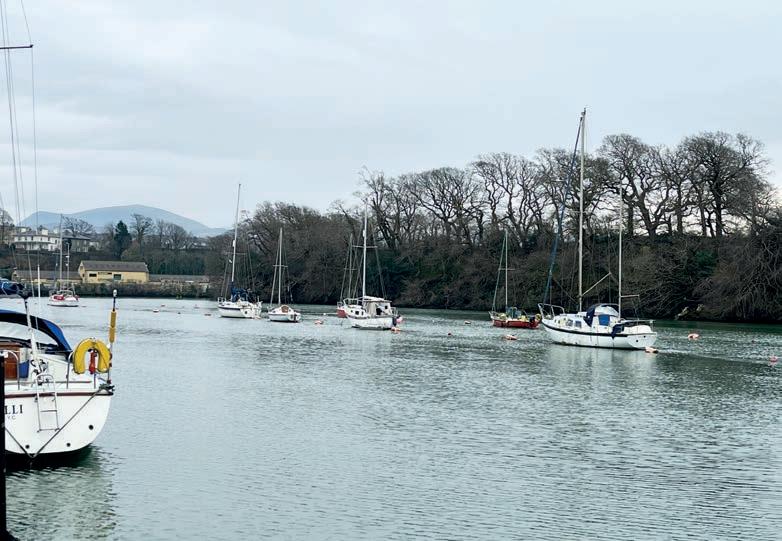


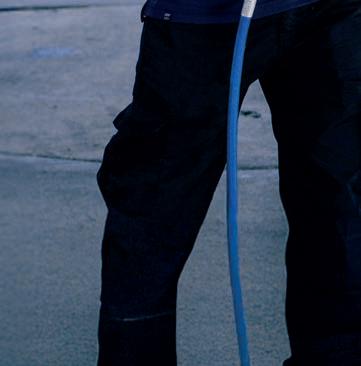



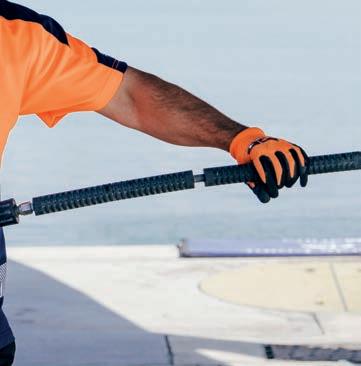






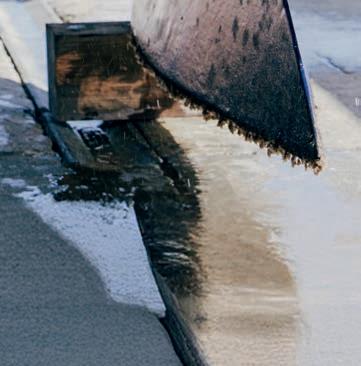



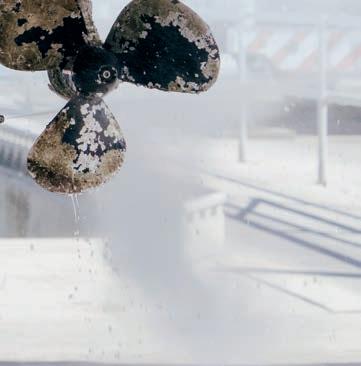




















POOLE QUAY
BOAT HAVEN
POOLE QUAY BOAT HAVEN
POOLE QUAY
POOLE QUAY
BOAT HAVEN
BOAT HAVEN
























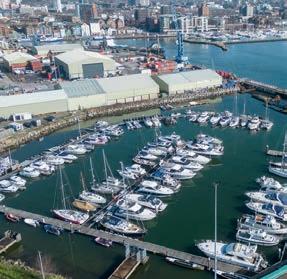





Relax with a glass of wine, on a sunny afternoon, on your own swinging mooring in Poole Harbour overlooking Brownsea Island. Away from the madding crowd, these offer you ultimate privacy, peace & tranquillity.
PORT OF POOLE

PORT OF POOLE
PORT OF POOLE MARINA
PORT OF POOLE

125 visitor berths all year for vessels up to 75m in length and up to 4.8m draft
On the Port estate we can accommodate vessels up to 210m in length with a maximum draft of 9m.